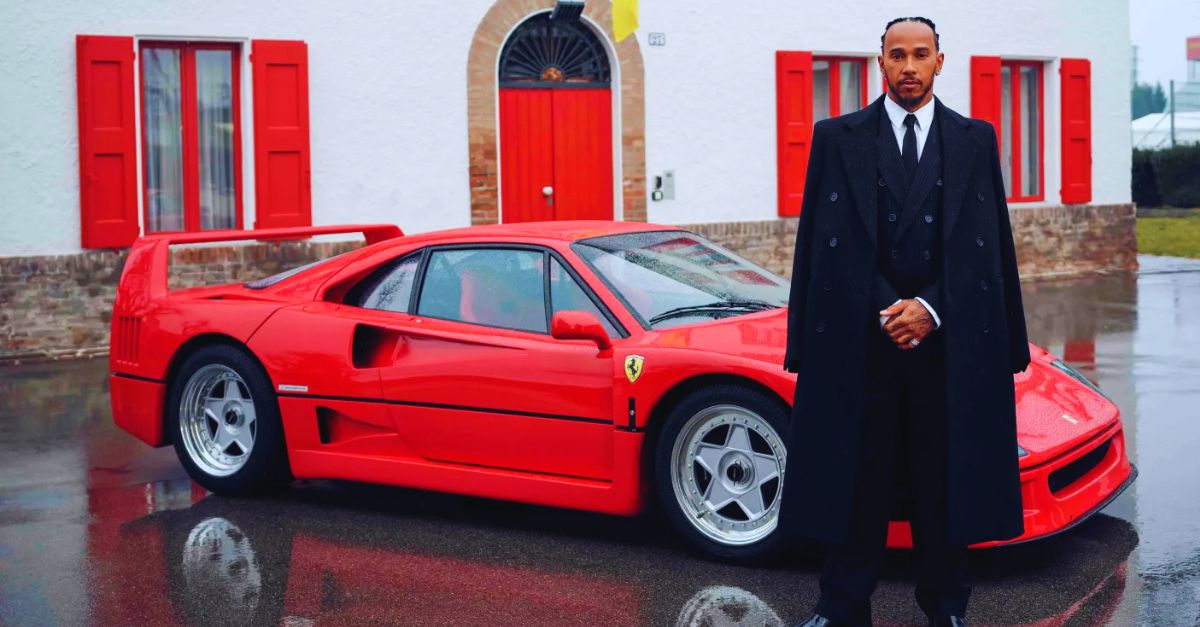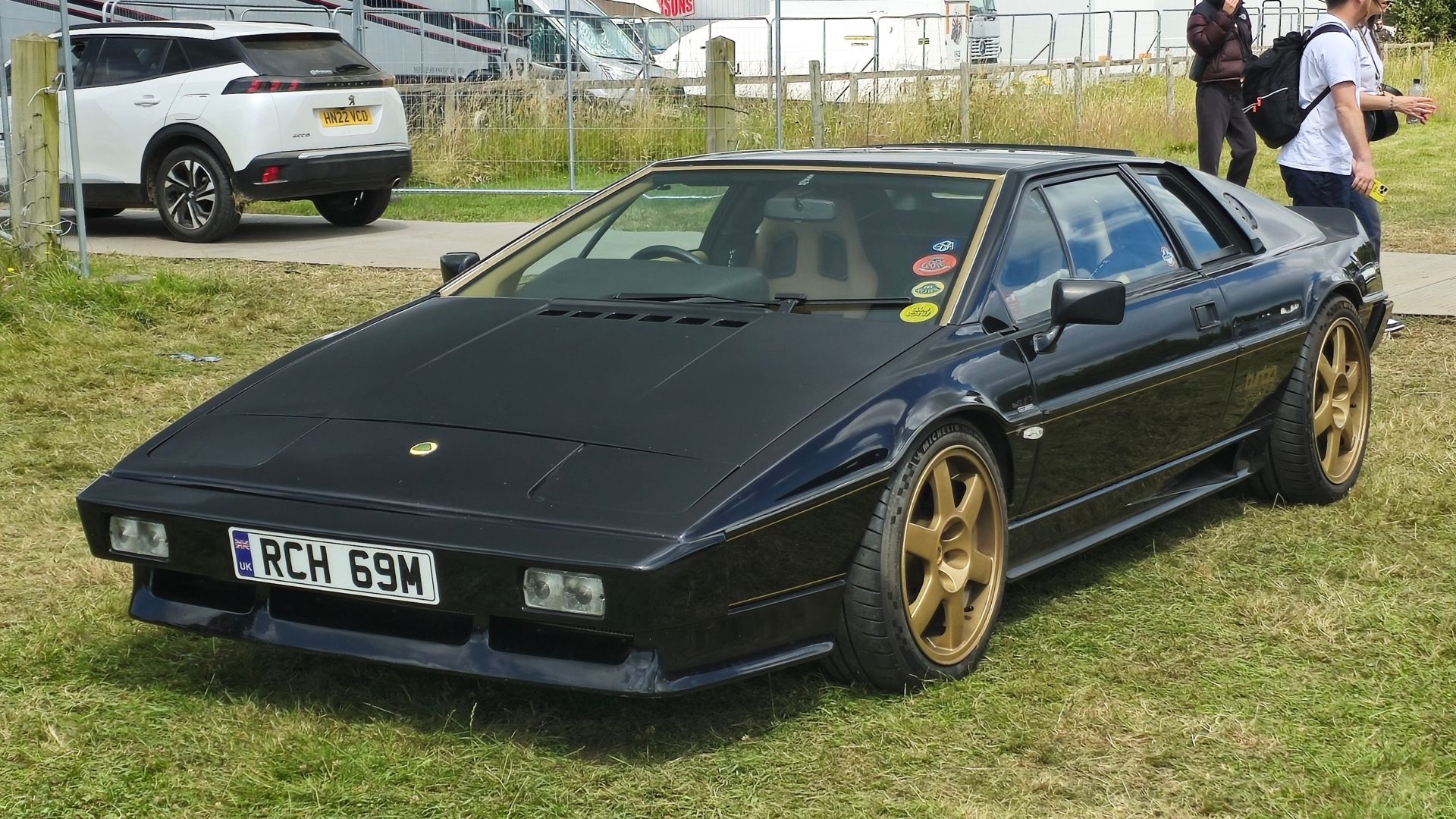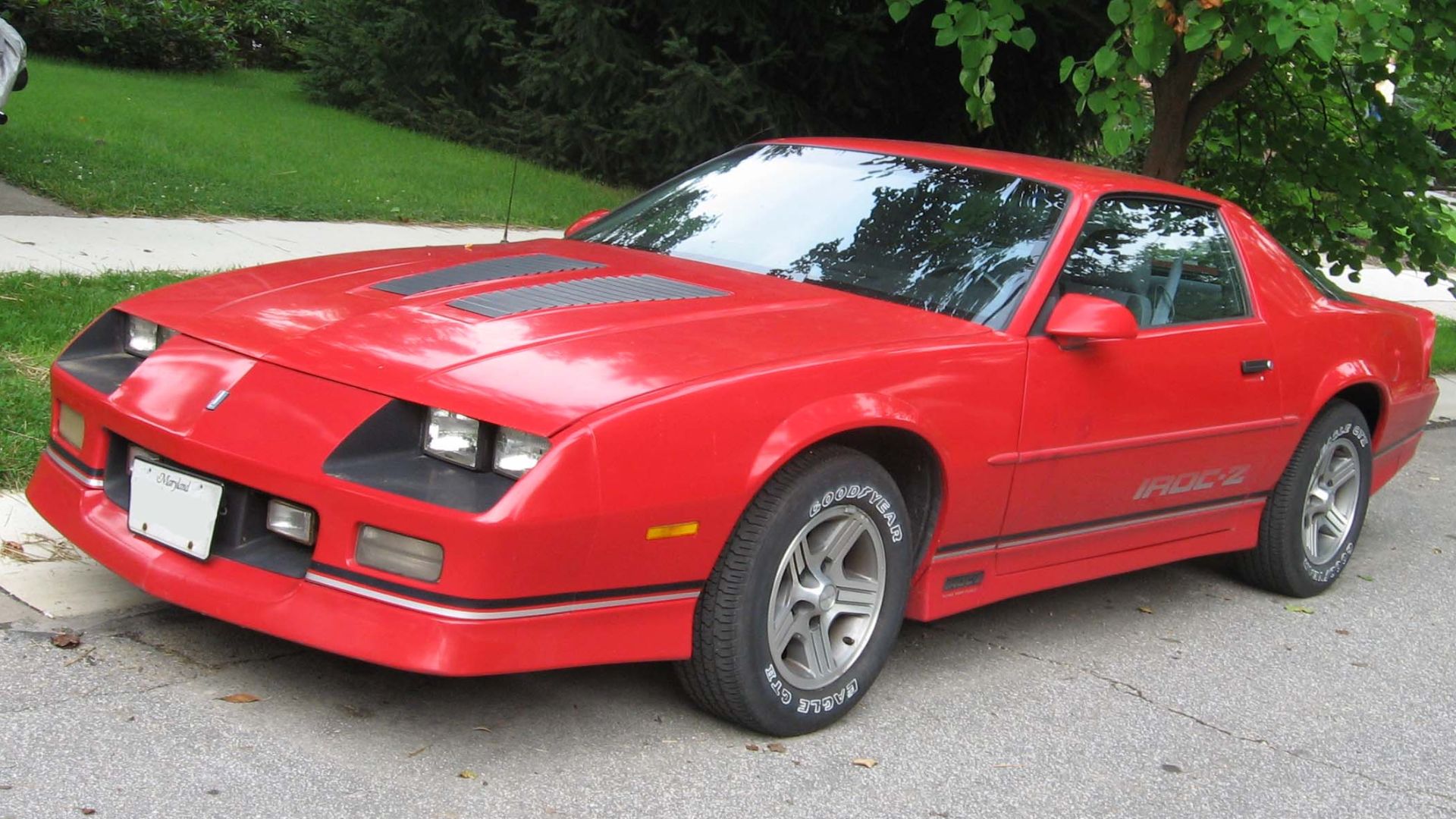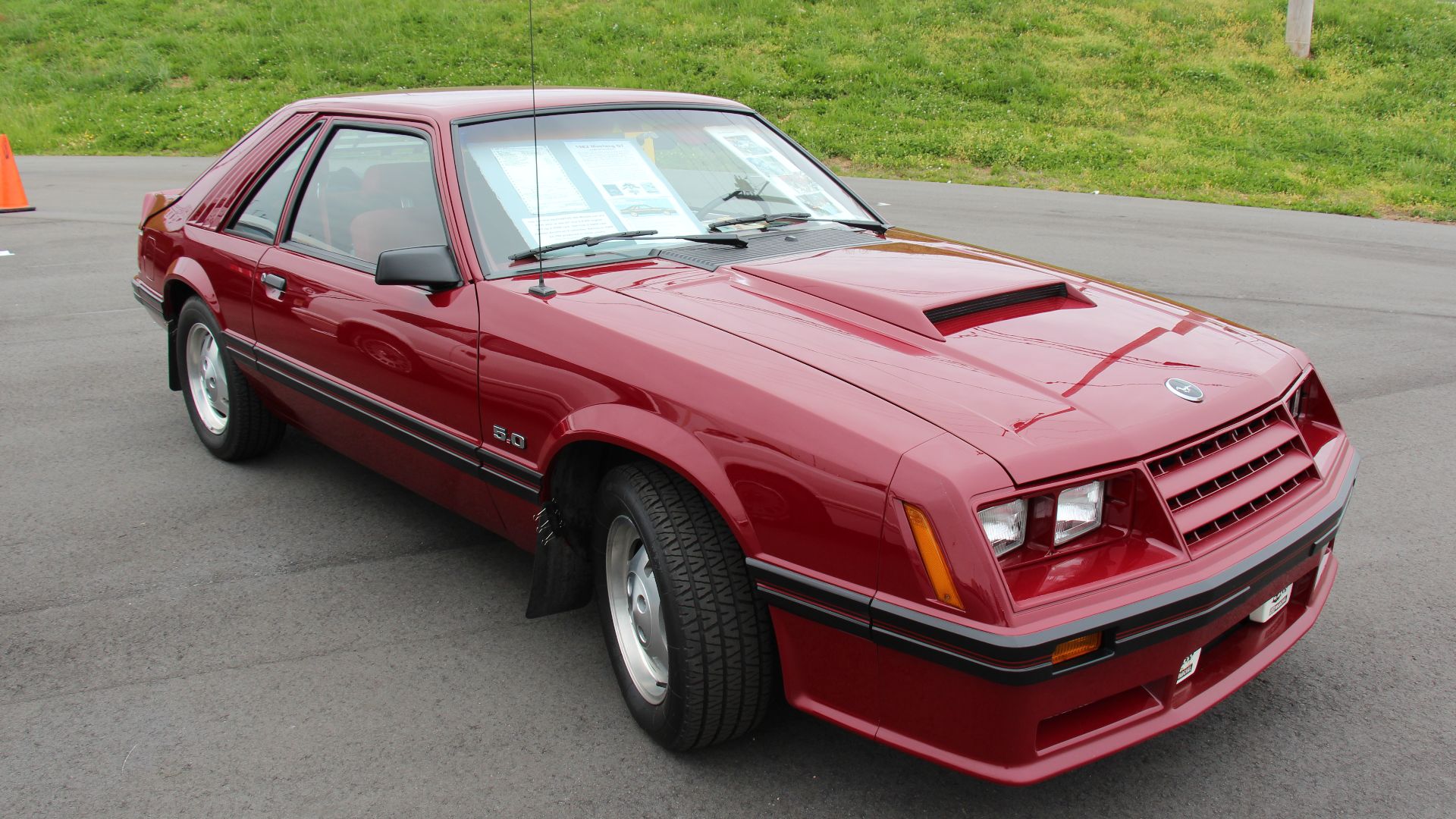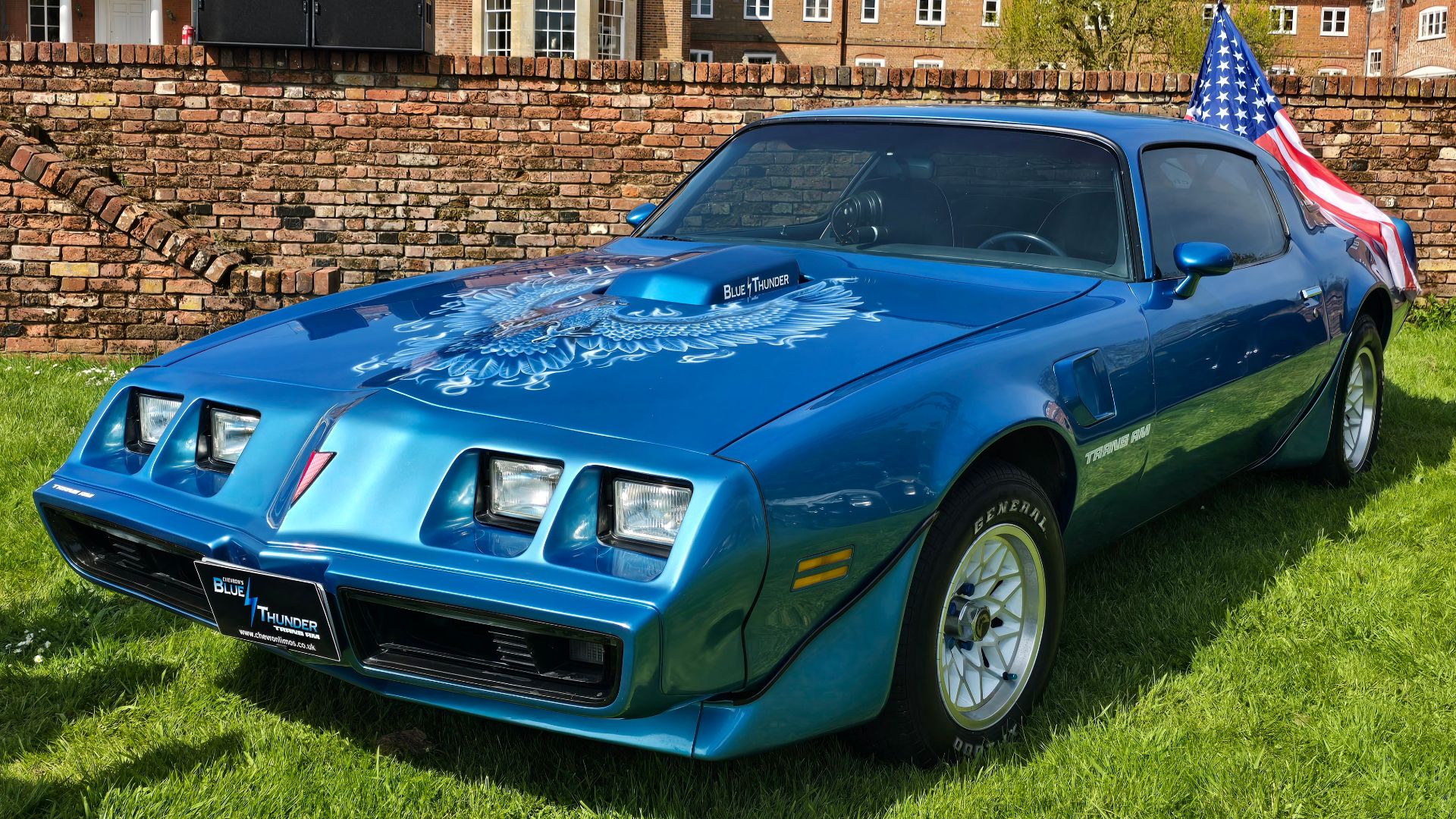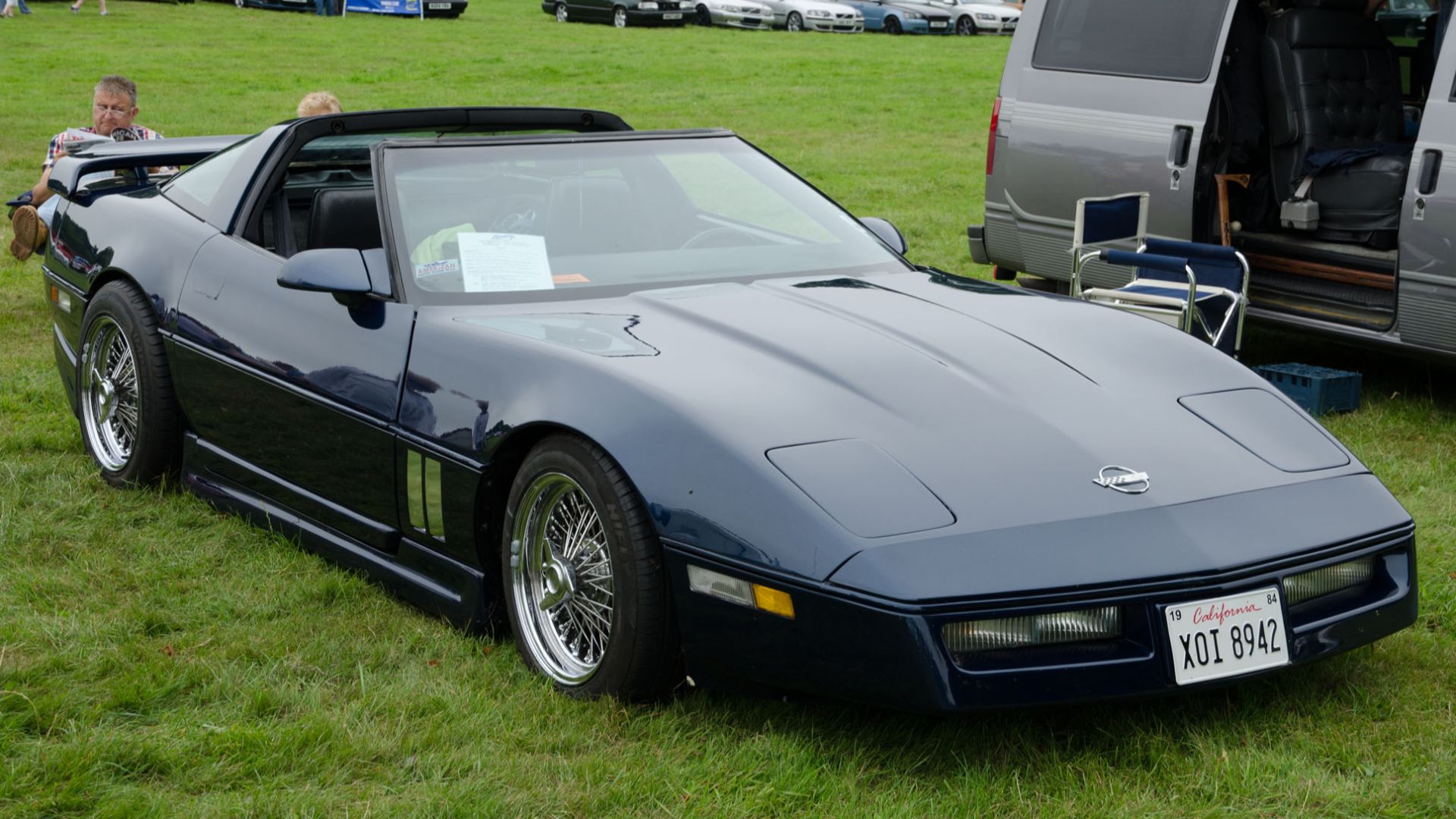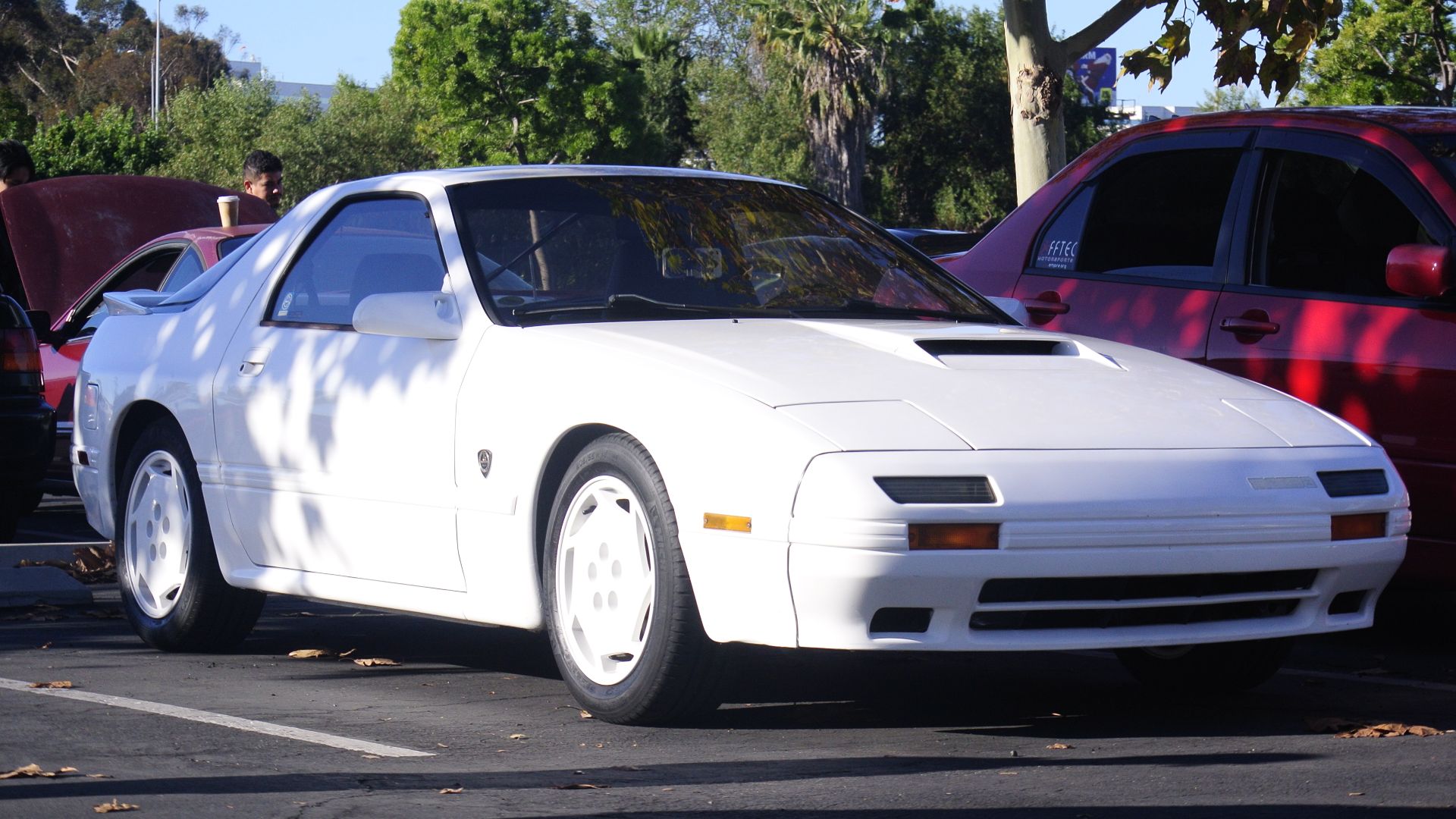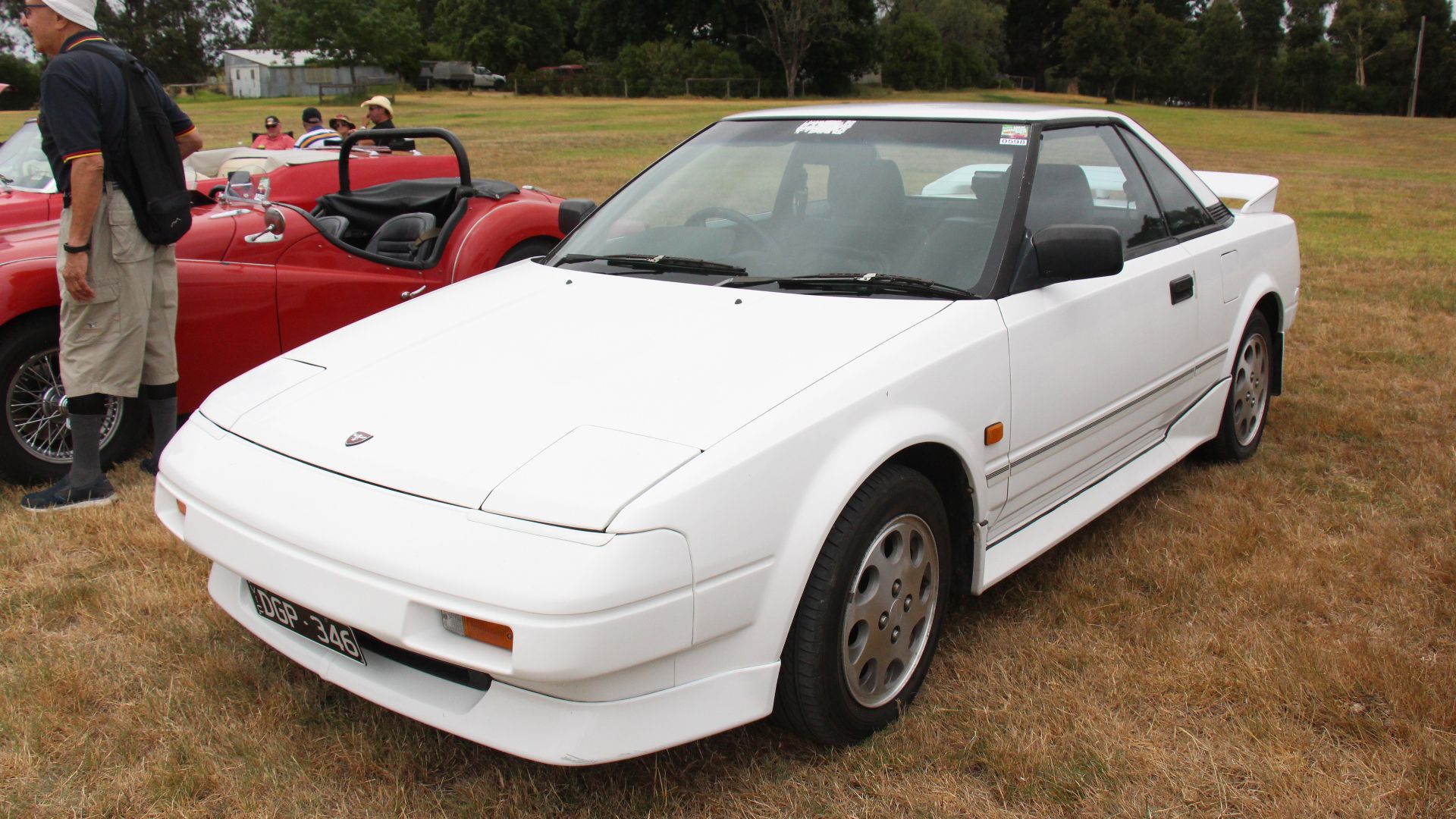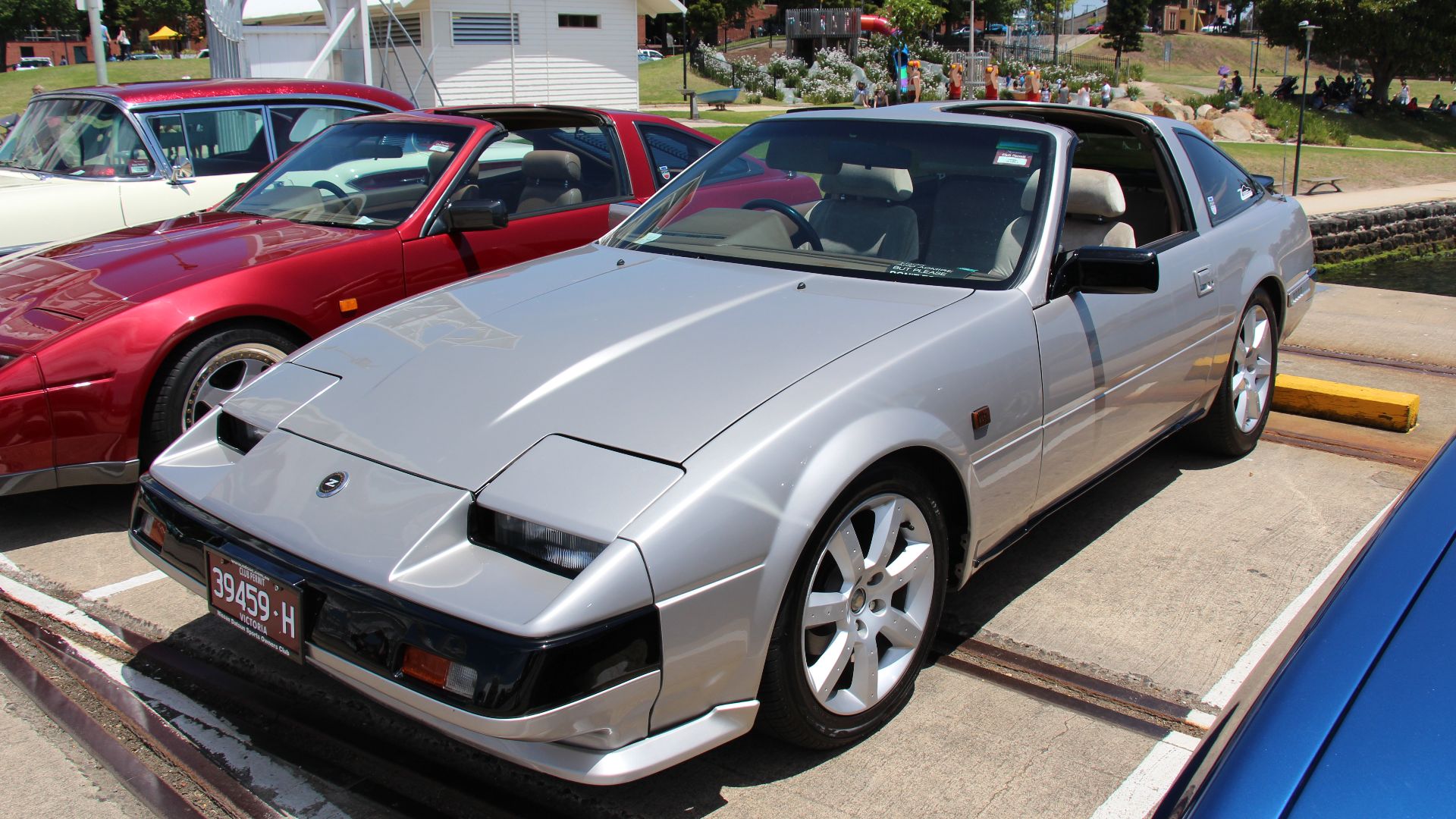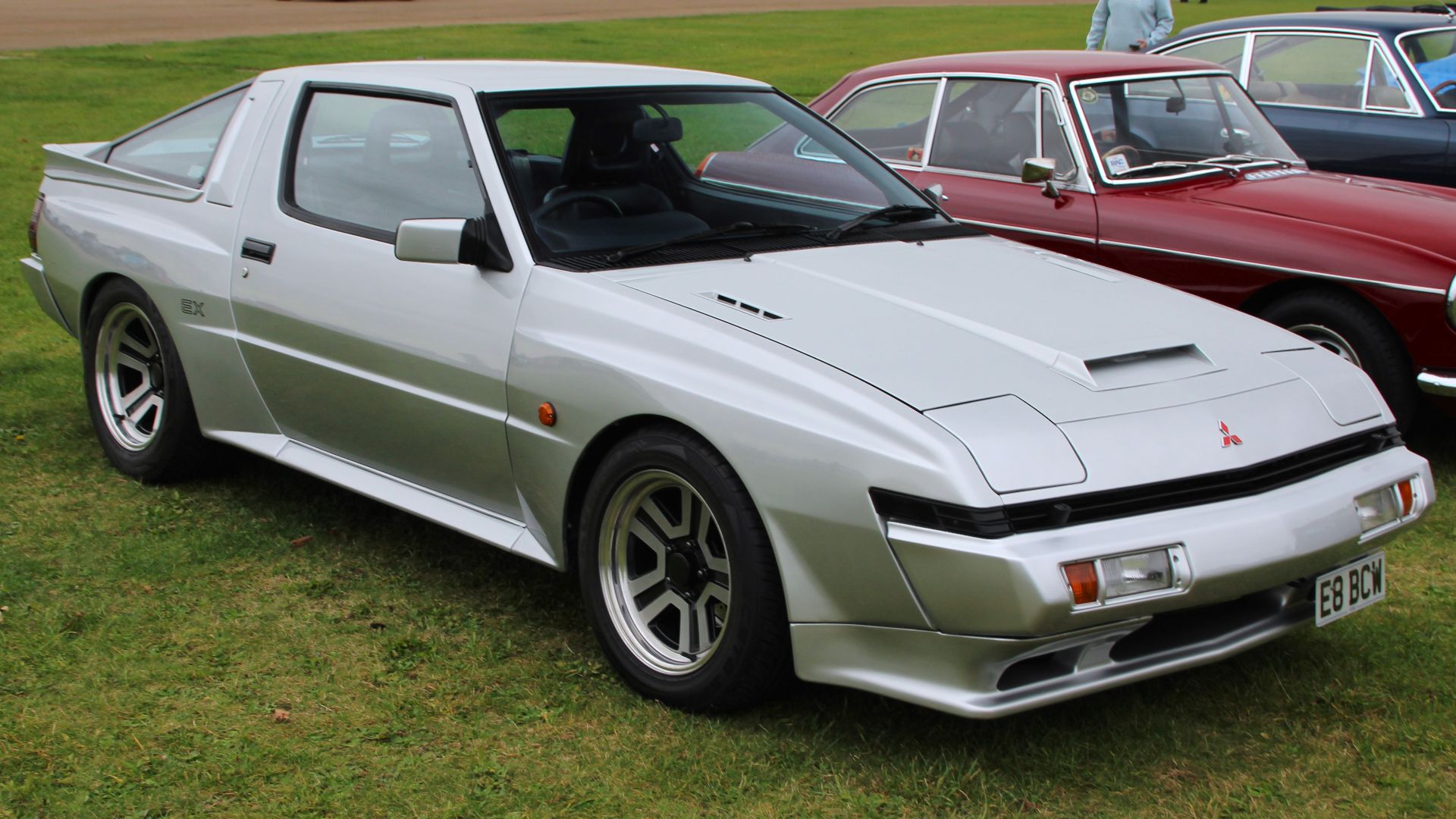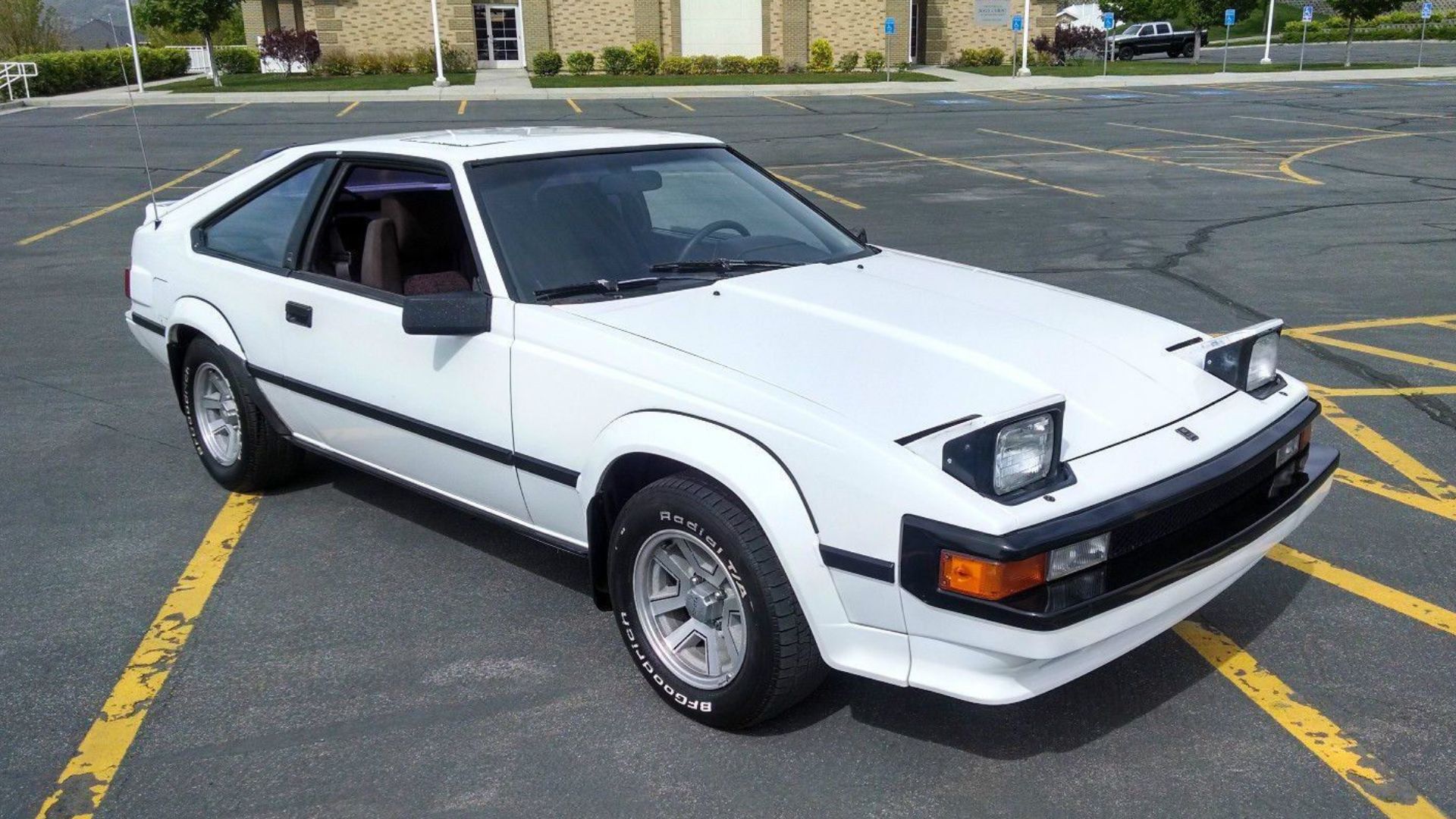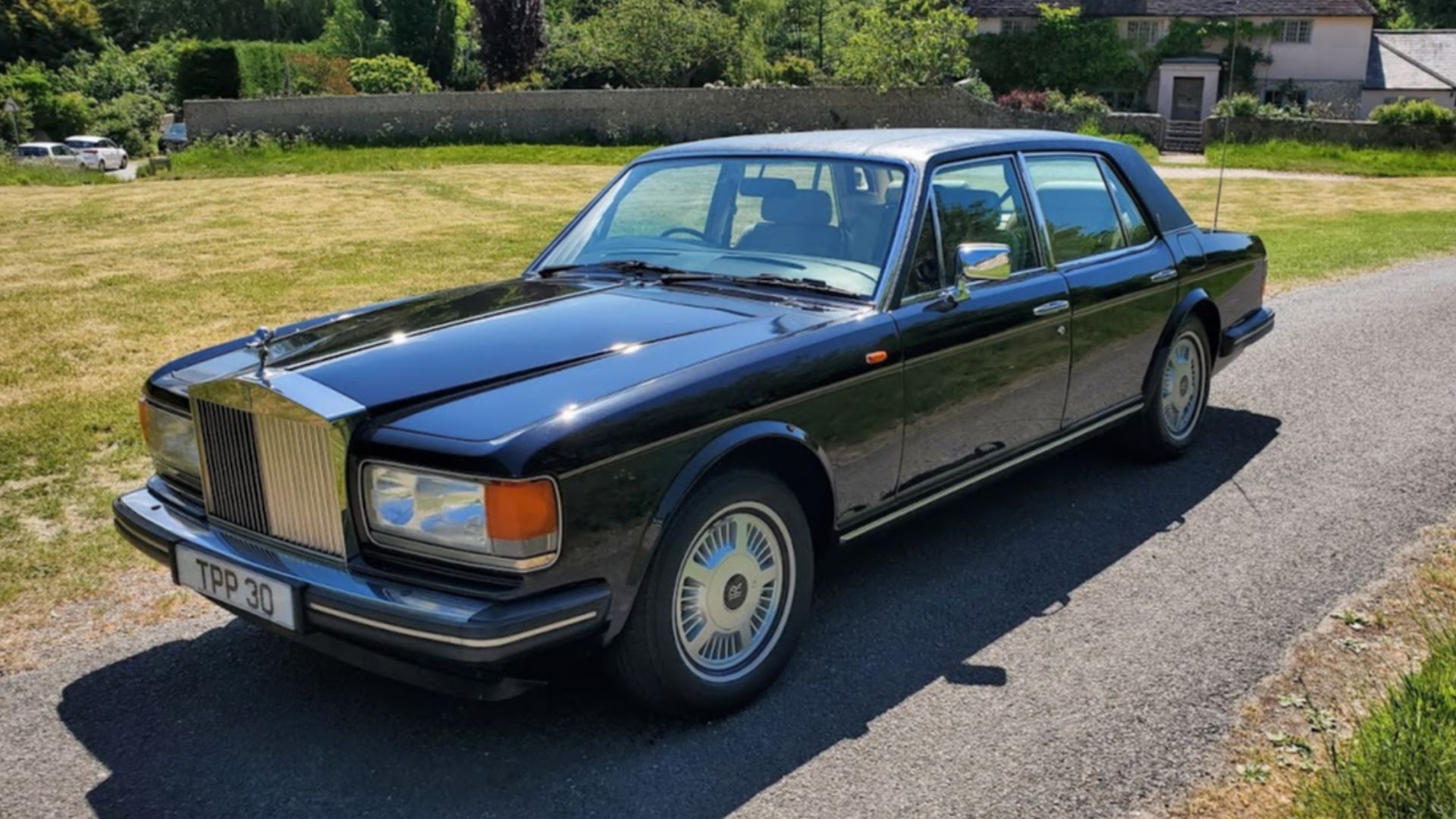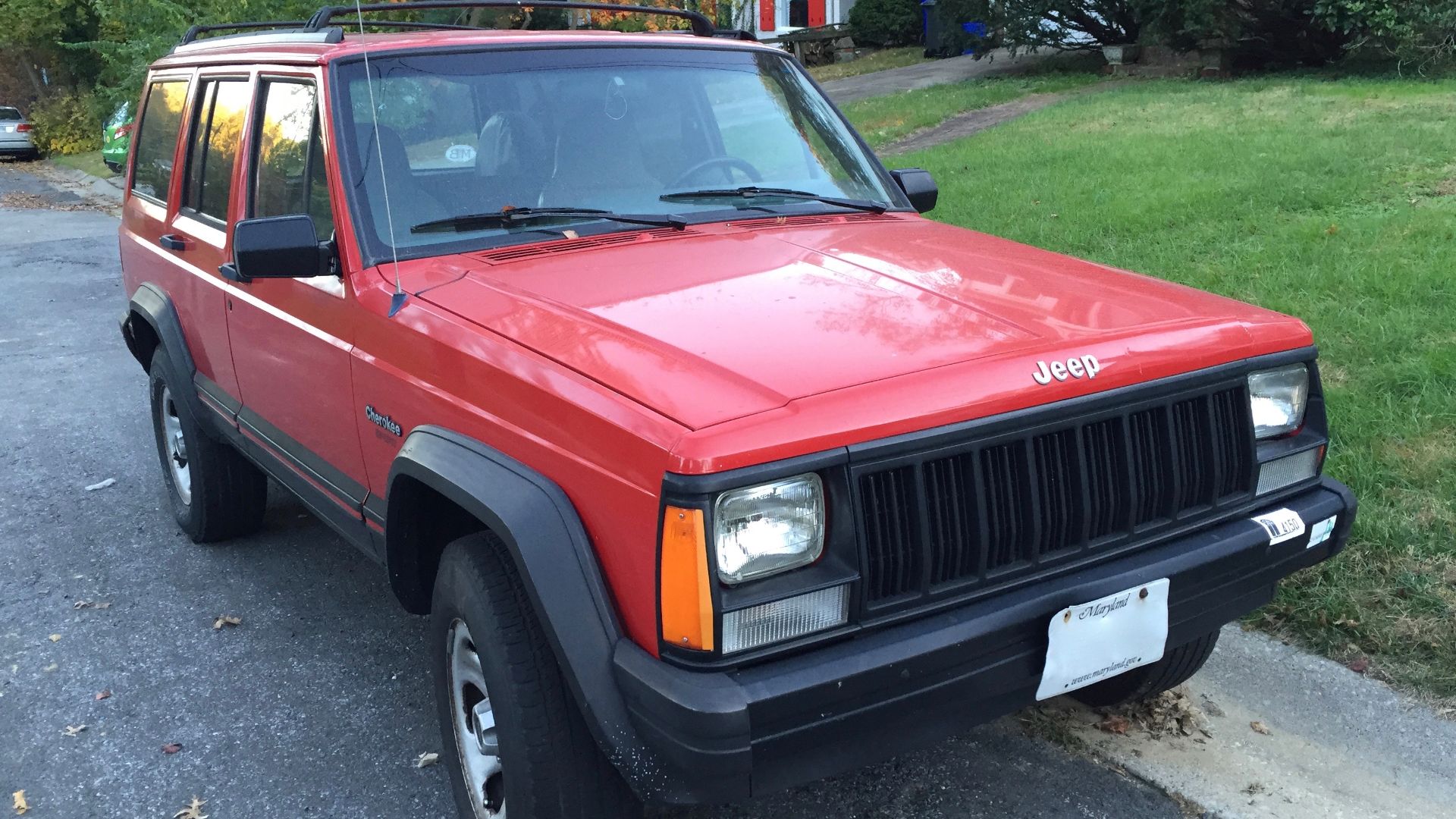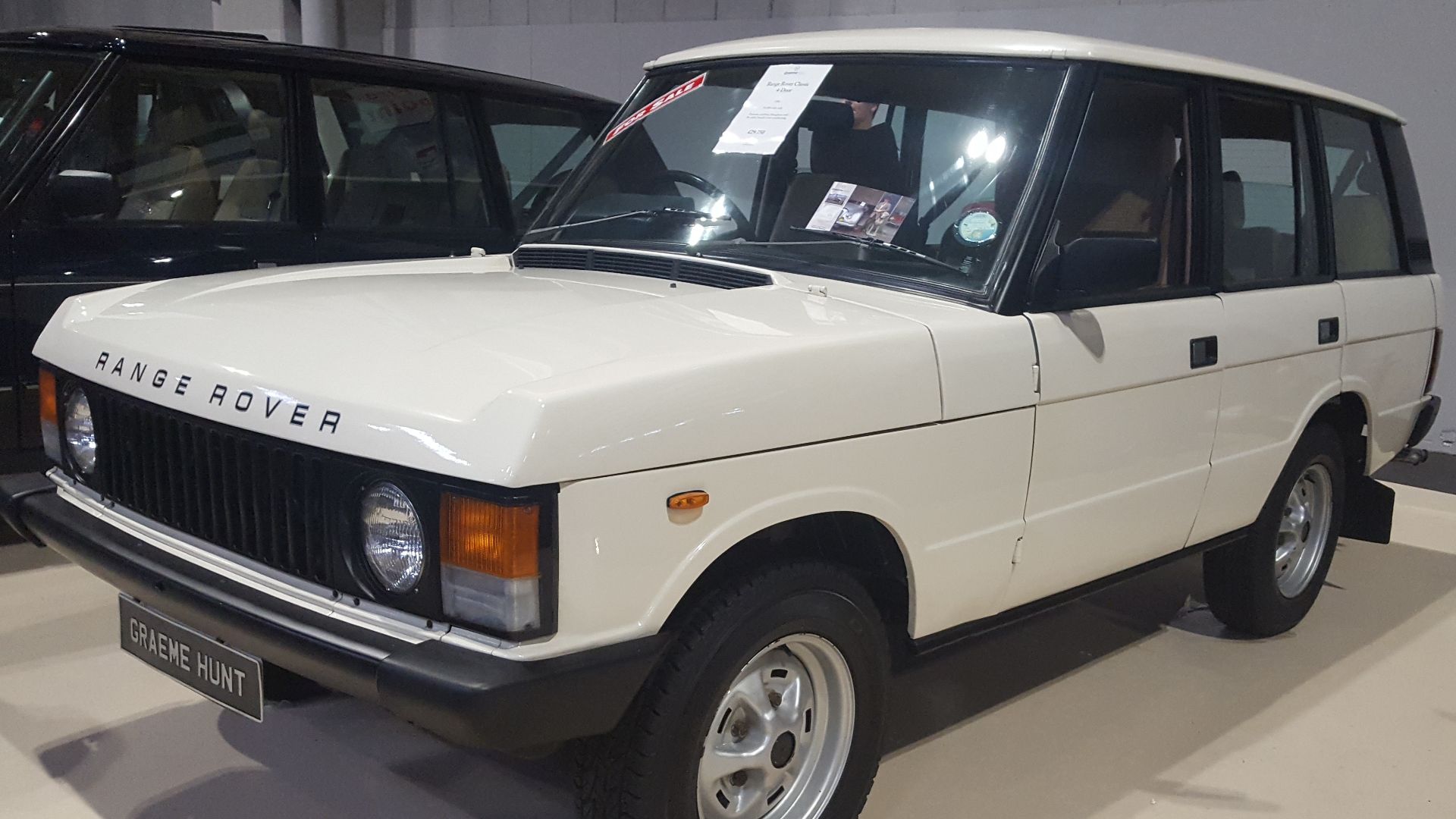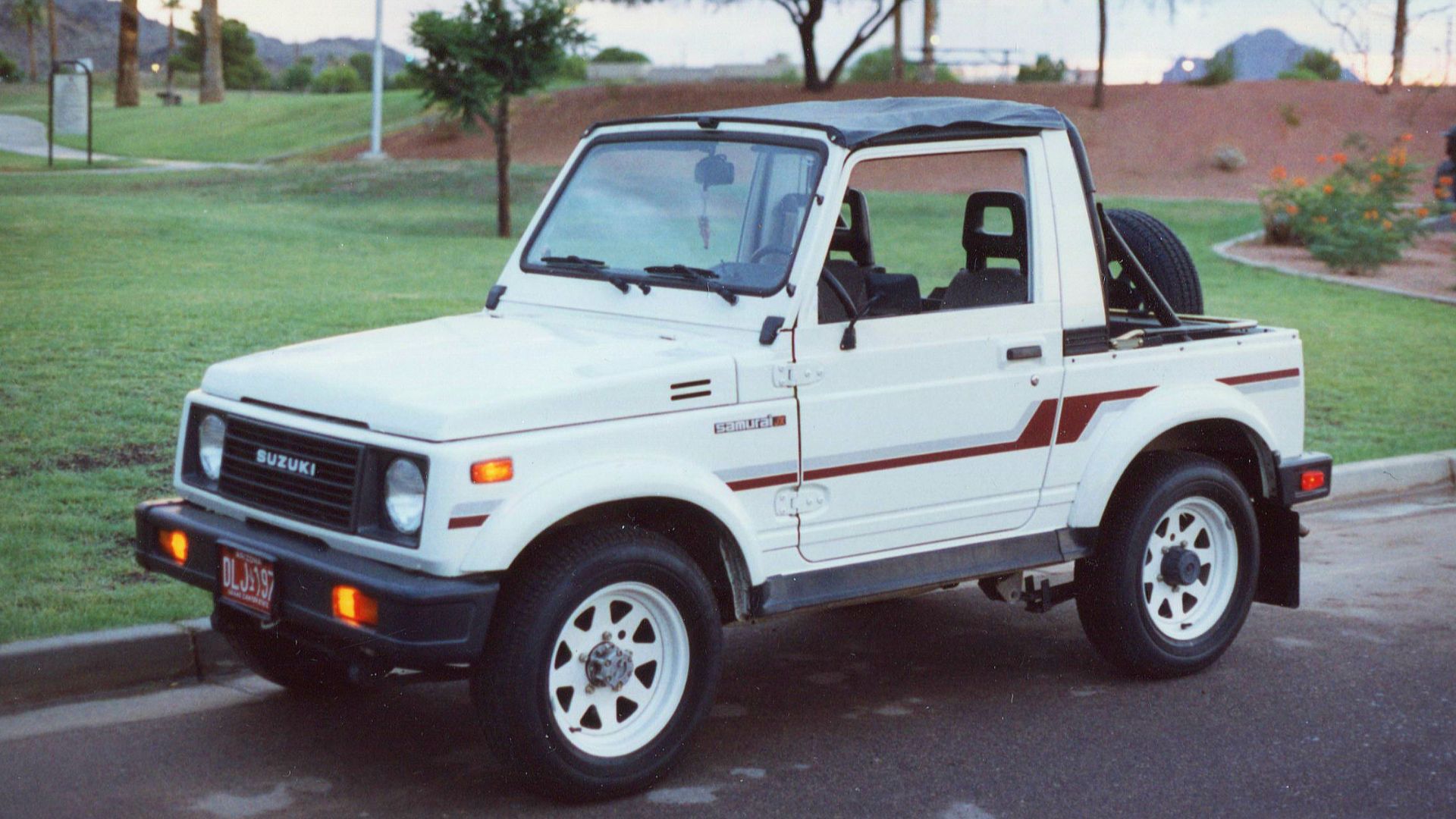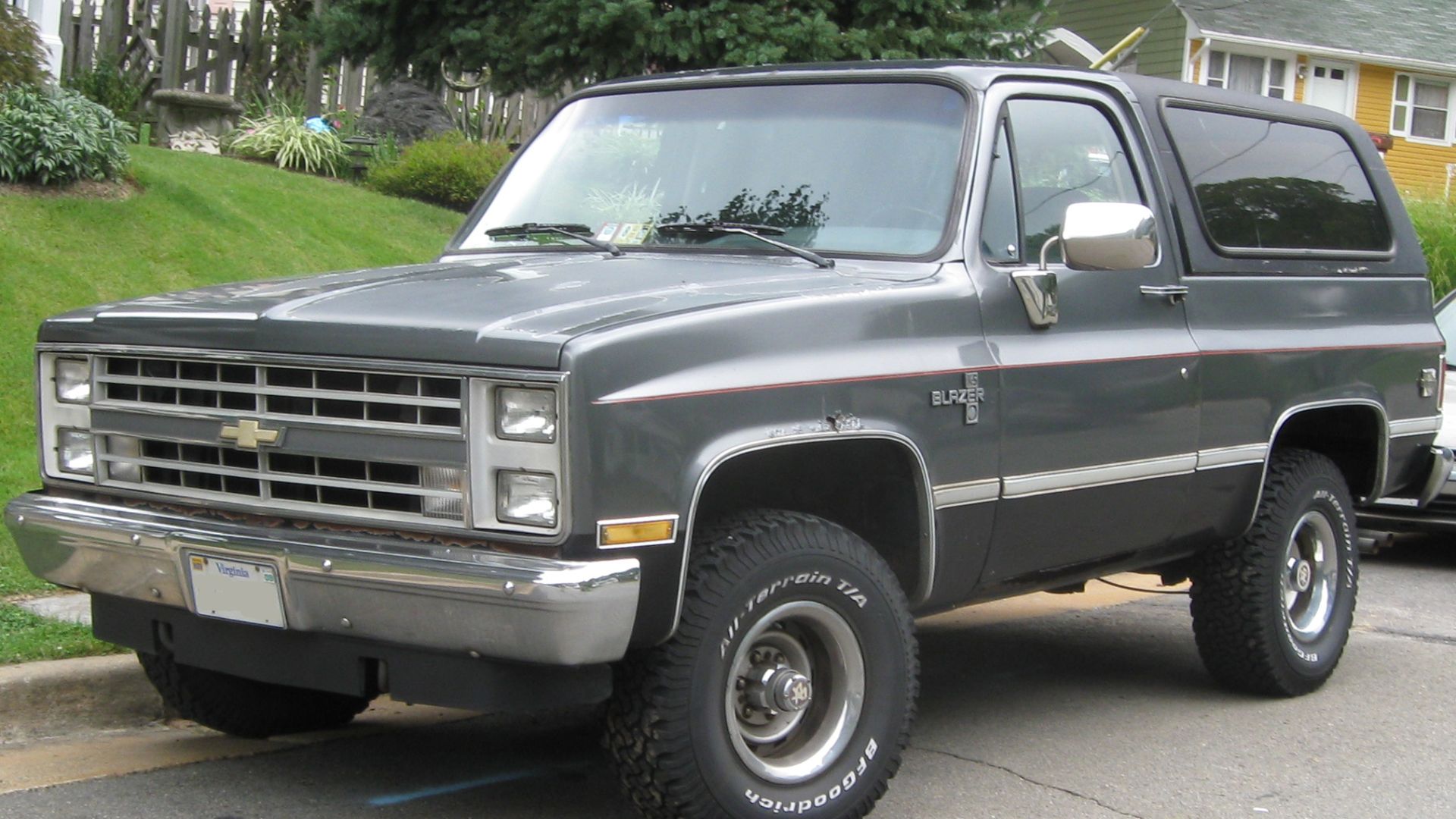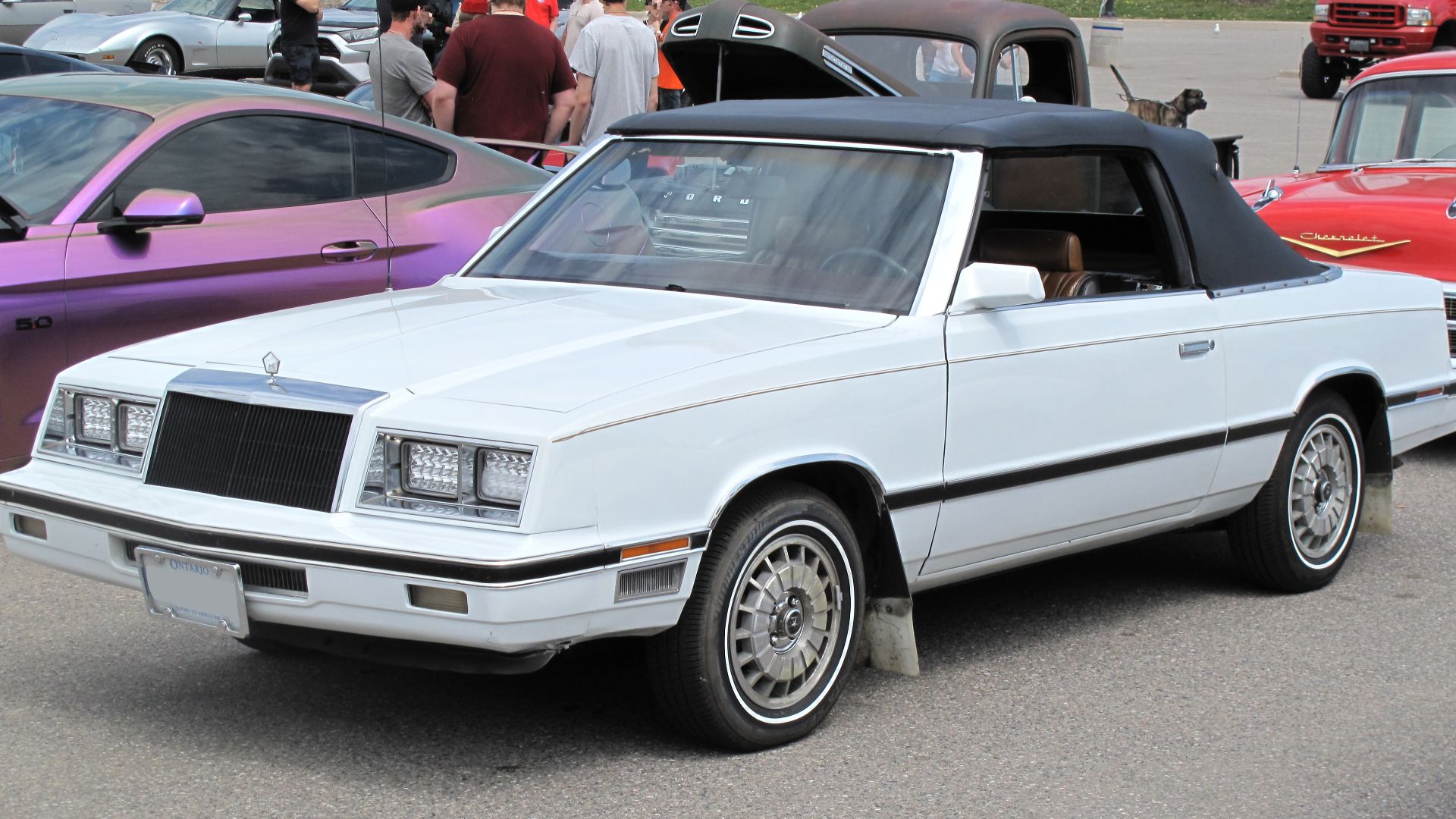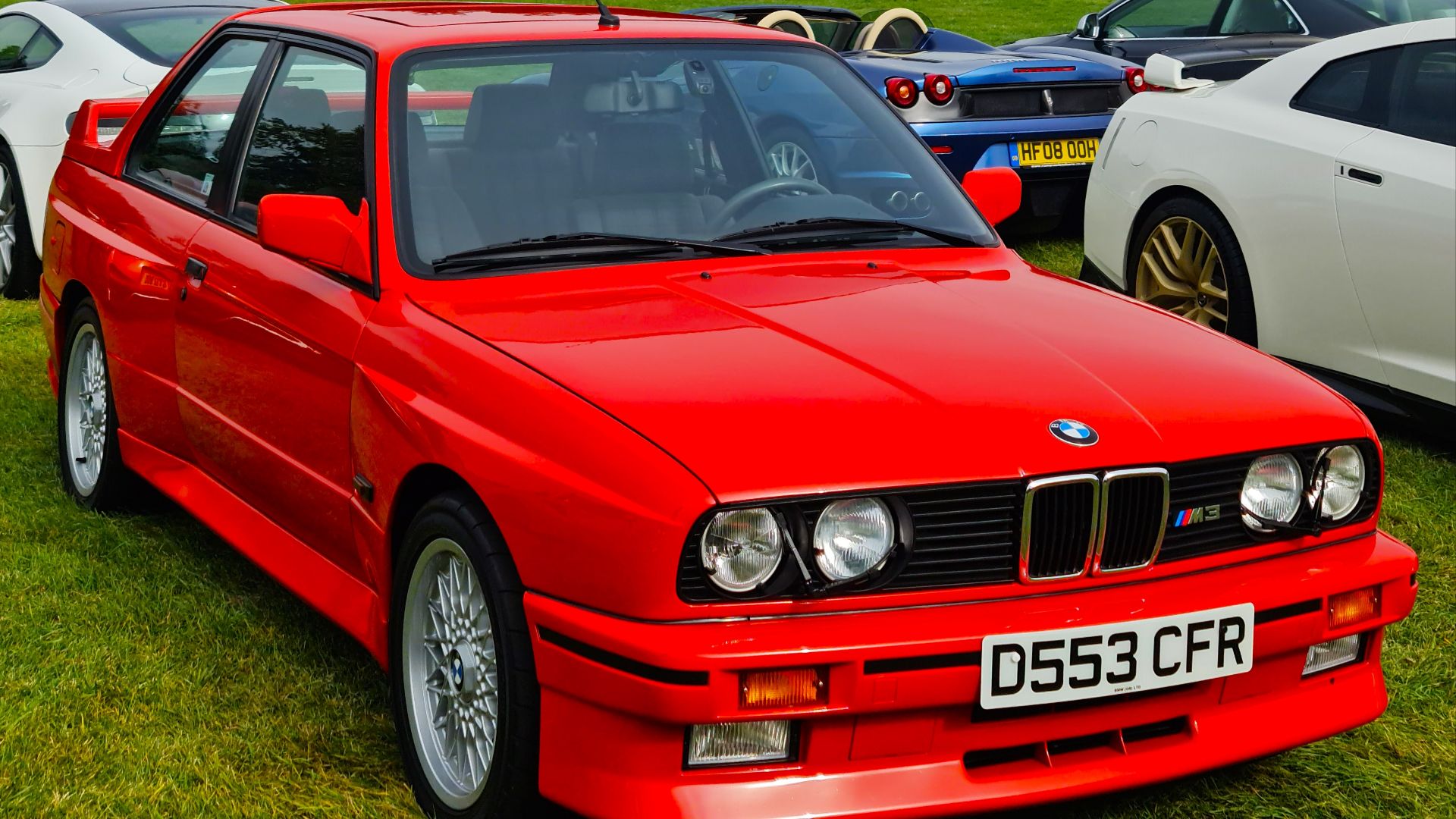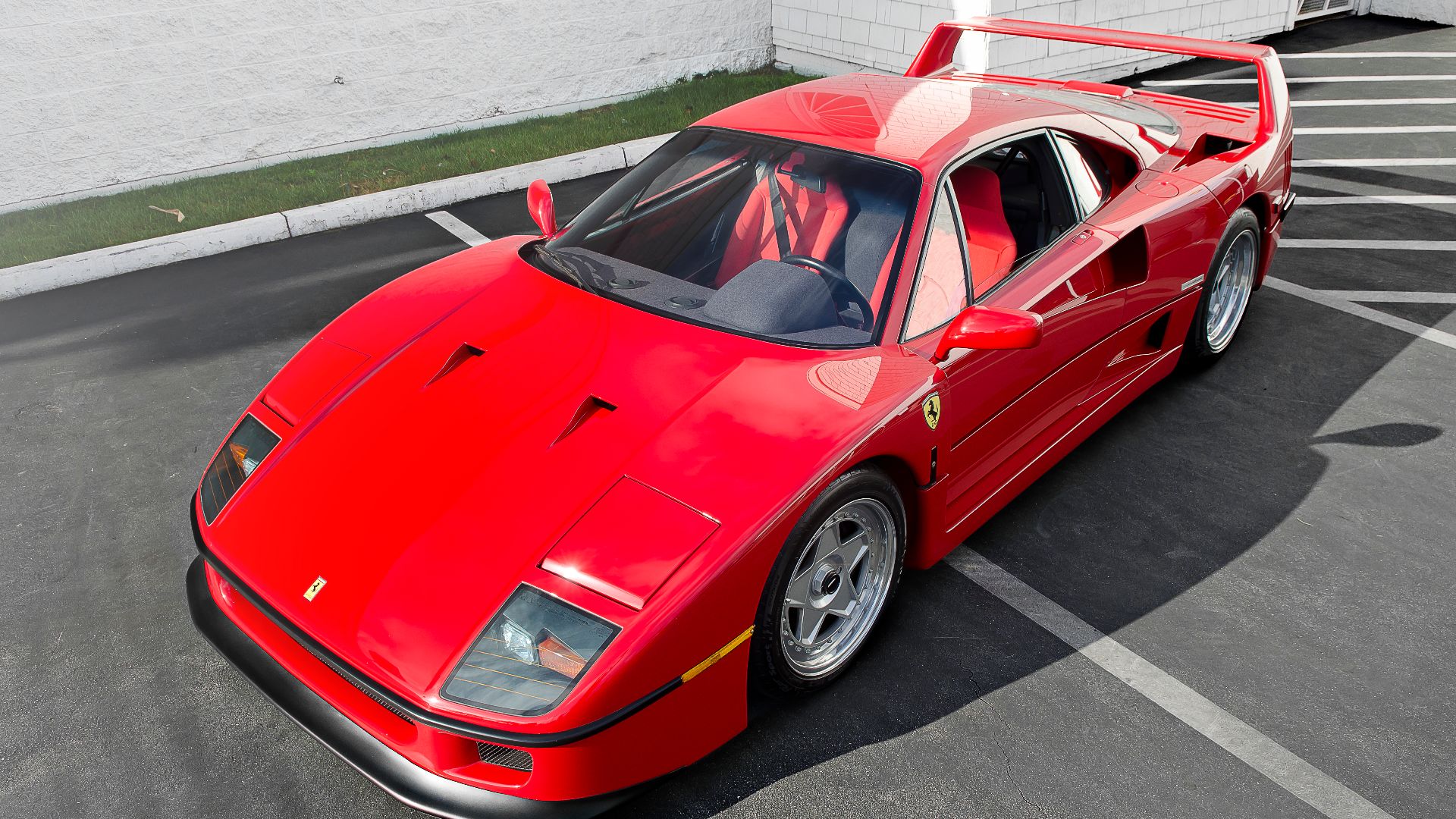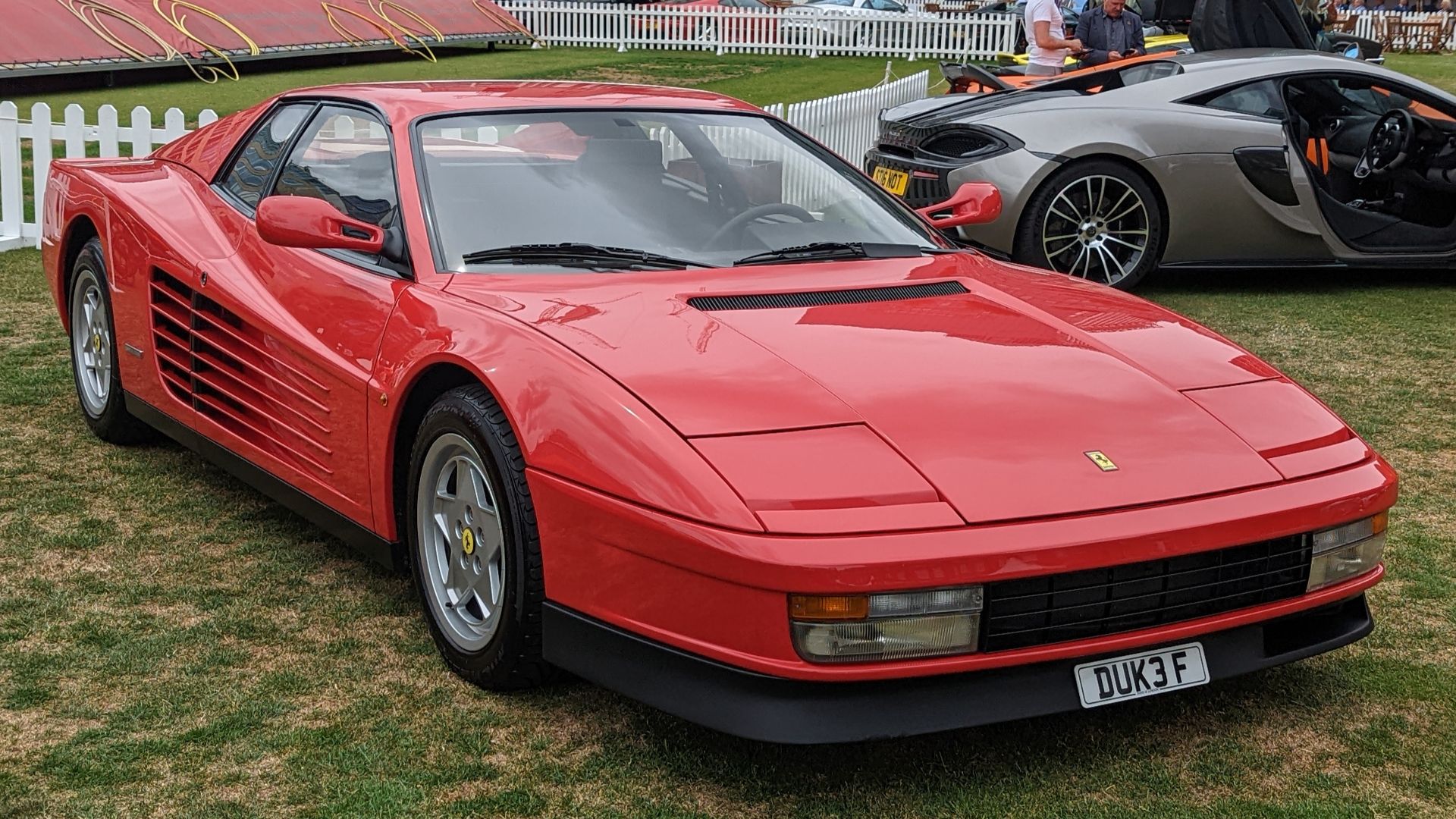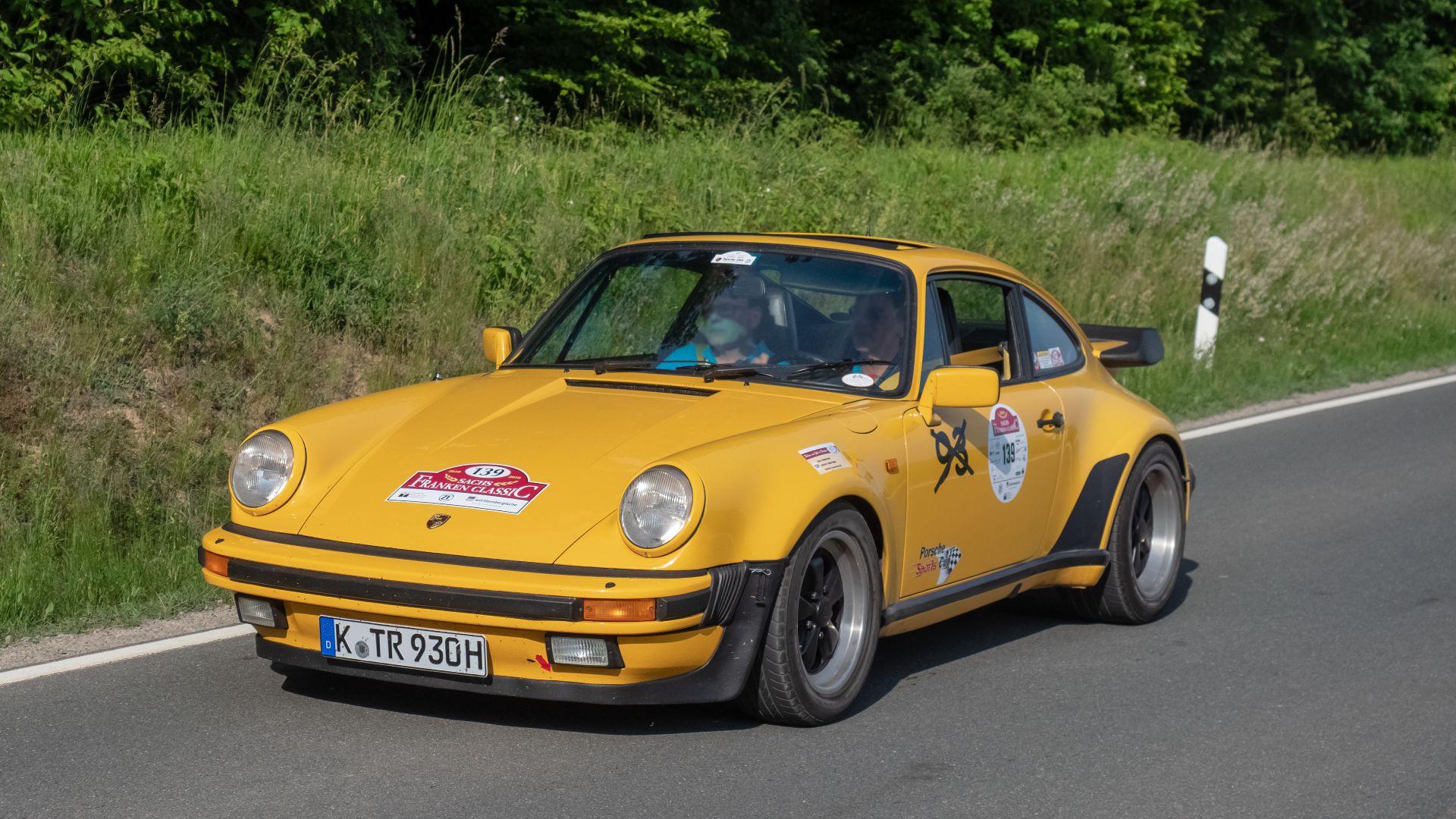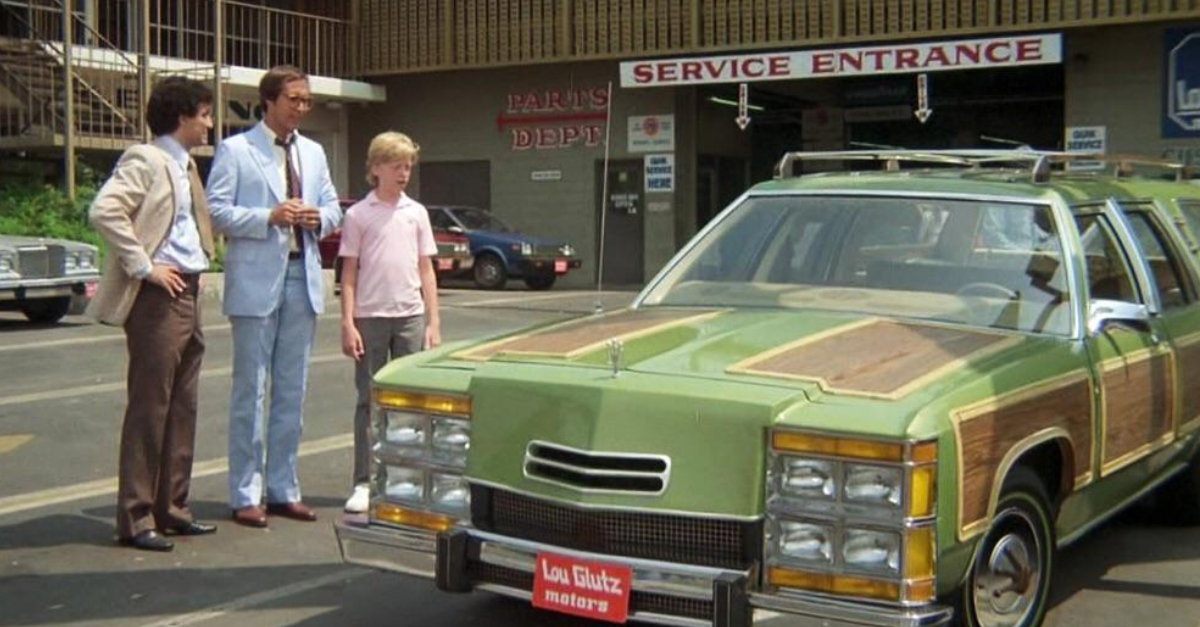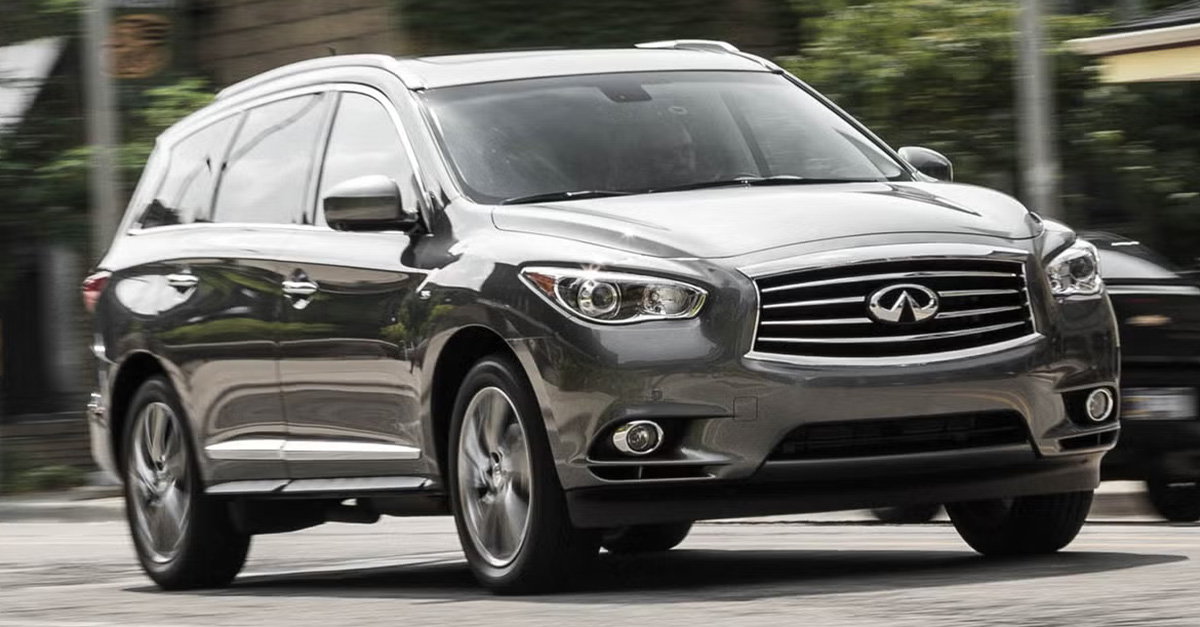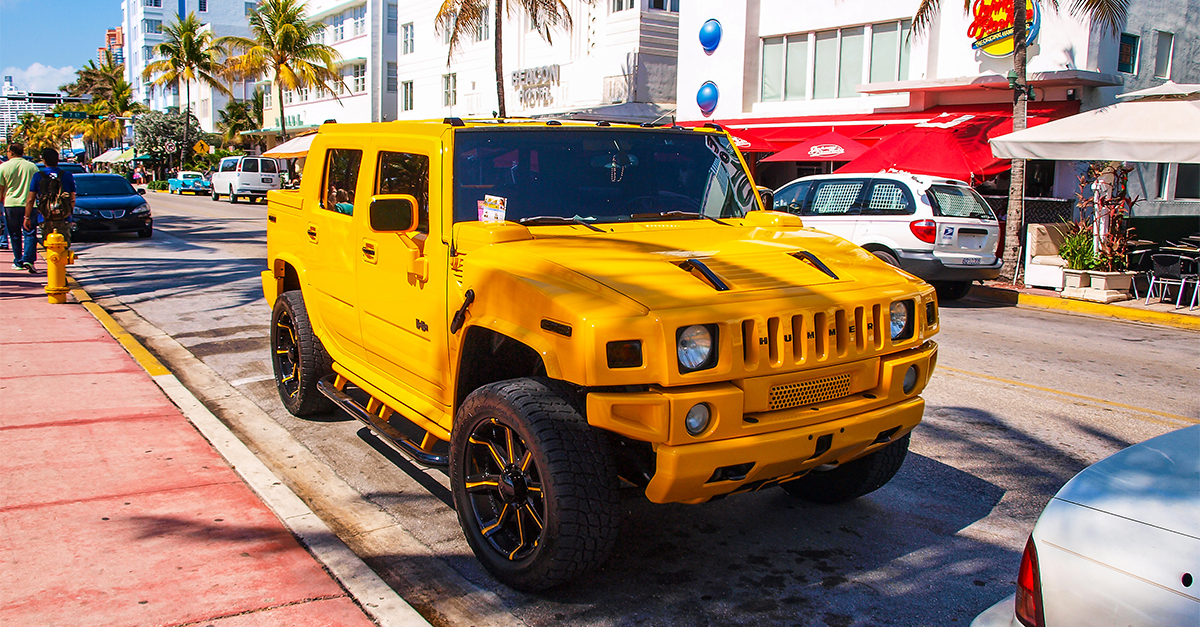Rolling Through the Neon Years
The 1980s delivered big hair, booming music, and cars that seemed to have been born from fantasy. These machines defined cool, and turned every street a rolling showcase of style.
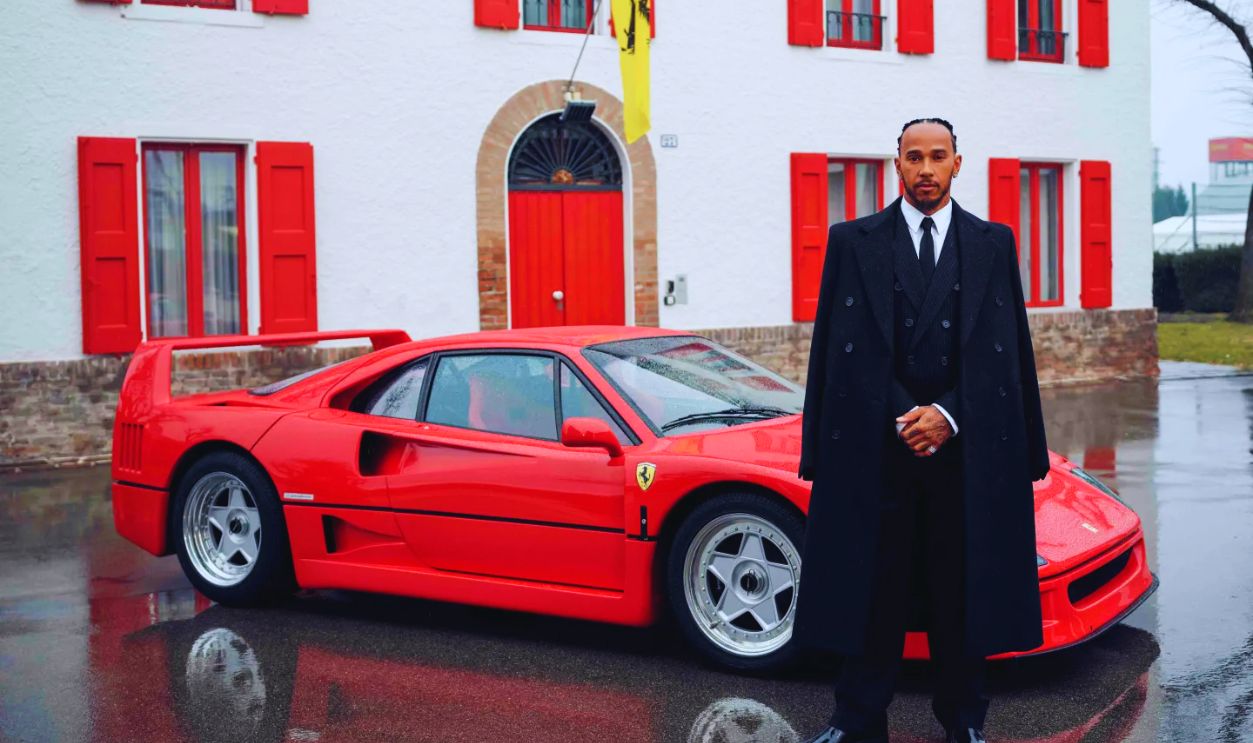
Lamborghini Countach
Today's supercar design language of aggressive angles and dramatic door articulation can be traced directly to the Lamborghini Countach. Its razor-sharp wedge profile and iconic scissor doors revolutionized 1980s automotive aesthetics, dominating Hollywood films and bedroom posters while inspiring designers to embrace bolder forms.
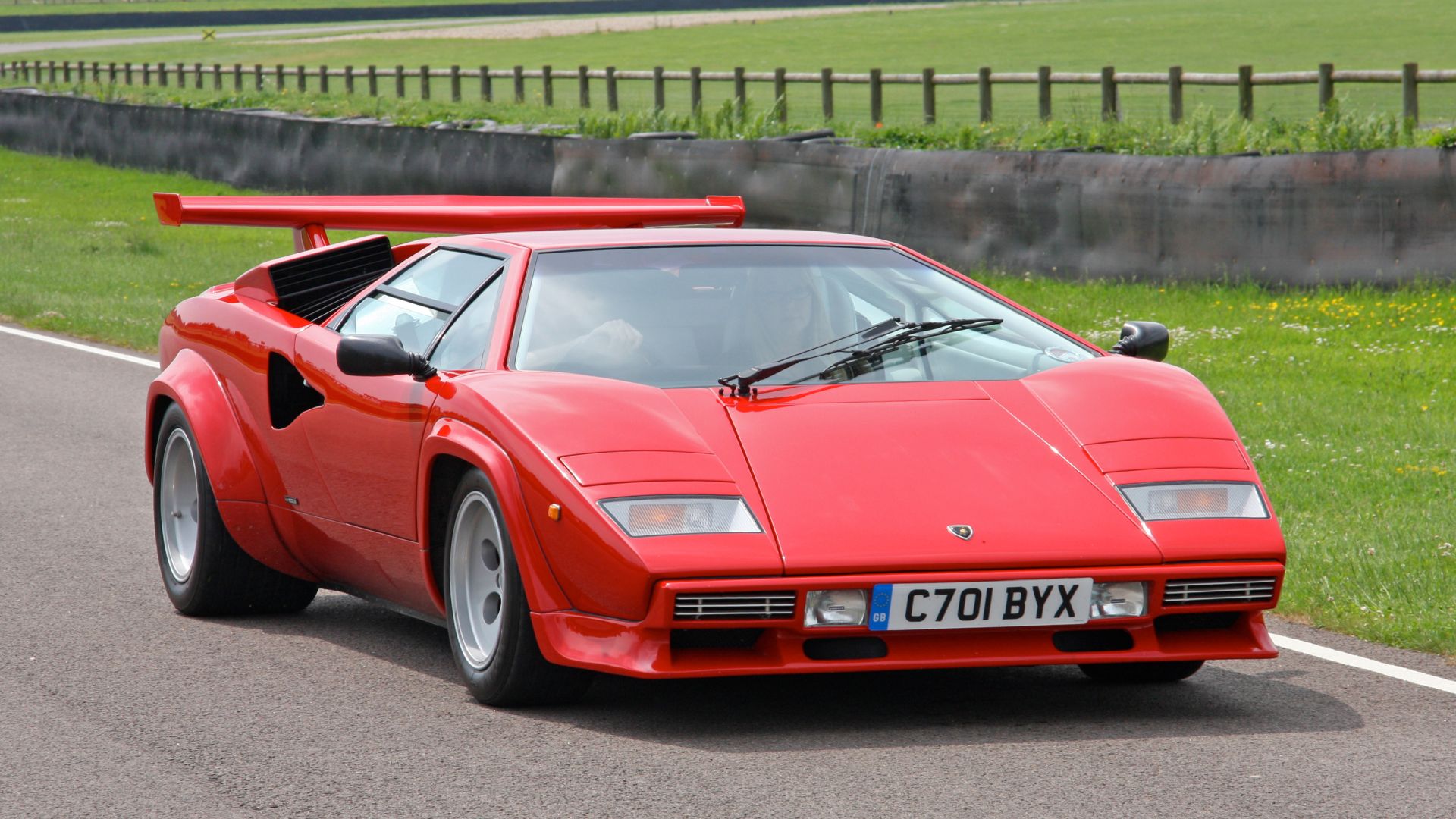 Brian Snelson from Hockley, Essex, England, Wikimedia Commons
Brian Snelson from Hockley, Essex, England, Wikimedia Commons
Delorean DMC-12
Talk about a one-hit wonder that actually hit: DeLorean's sole venture into automaking, the DMC-12, dropped in 1981, flaunting space-age stainless steel and those killer gullwing doors. Even though production stalled by 83, its star turn in Back to the Future cemented its place as a cultural icon forever.
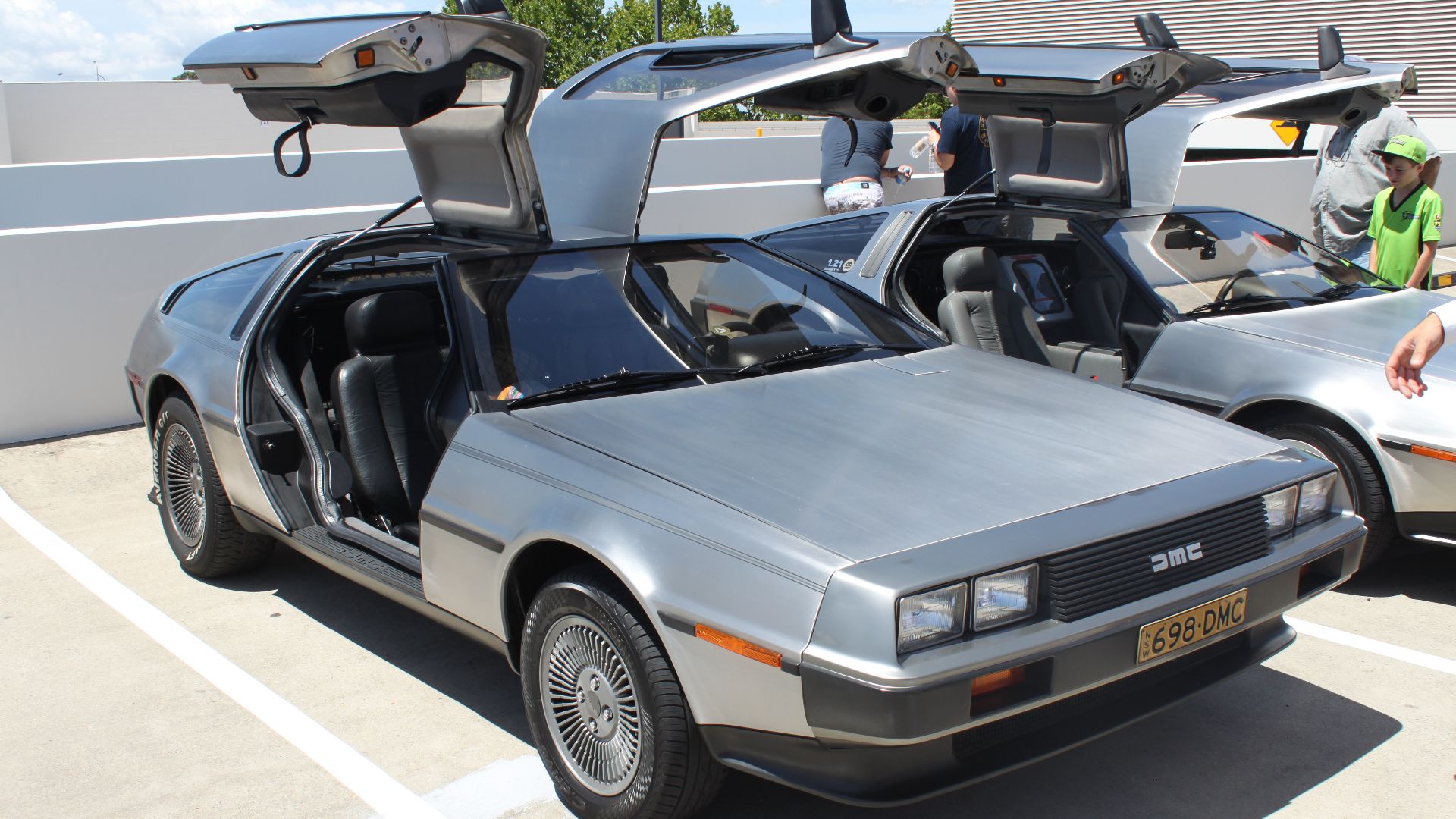 Jeremy from Sydney, Australia, Wikimedia Commons
Jeremy from Sydney, Australia, Wikimedia Commons
Aston Martin V8 Vantage
Before James Bond made it a silver screen legend, the Aston Martin V8 Vantage was already turning heads as Britain's ultimate muscle car. Its potent V8 engine, luxurious interior, and aggressive styling perfectly balanced brute force with sophisticated elegance.
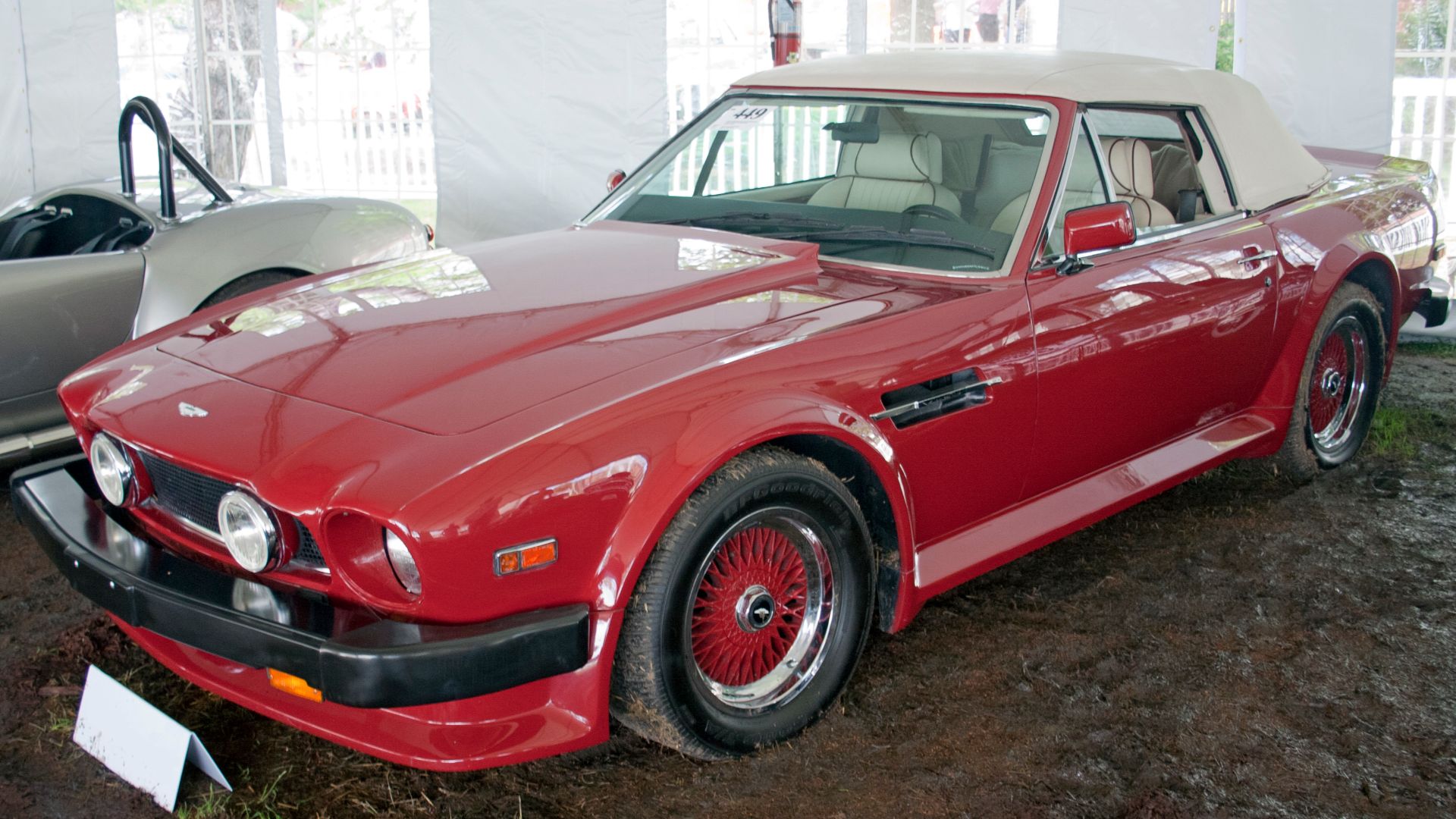 Mr.choppers, Wikimedia Commons
Mr.choppers, Wikimedia Commons
Lotus Esprit Turbo
Giugiaro's revolutionary wedge design for the Lotus Esprit Turbo didn't just reshape metal—it sculpted an era's imagination. This razor-sharp silhouette rocketed into pop culture through James Bond's For Your Eyes Only, and this made a British sports car the ultimate symbol of the 1980s.
Ruf CTR Yellowbird
Behind its cheerful yellow paintwork, which inspired the "Yellowbird" nickname, lay an engineering revelation that transformed a standard 1987 Porsche 911 Carrera 3.2 into the legendary Ruf CTR. This masterwork of German tuning stunned the automotive world, outgunning contemporary supercars.
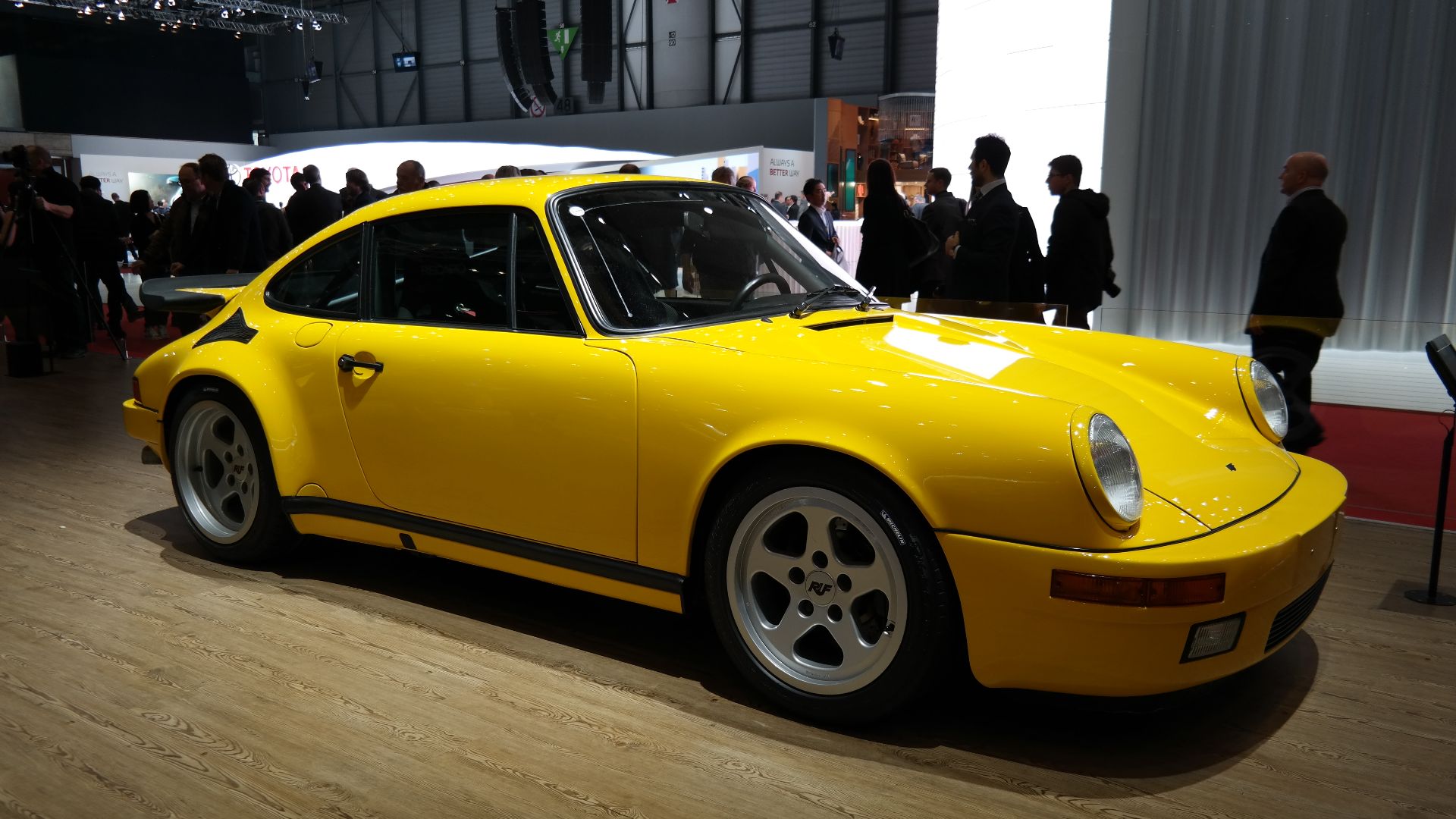 Norbert Aepli, Switzerland (User:Noebu), Wikimedia Commons
Norbert Aepli, Switzerland (User:Noebu), Wikimedia Commons
Chevrolet Camaro IROC-Z
Born from the prestigious International Race of Champions legacy yet destined for street supremacy, the 1985 Chevrolet Camaro IROC-Z bridged two worlds perfectly. Its competition-grade suspension and bold graphics merged racing pedigree with muscle car attitude, and the distinctive T-top design made an impression.
Ford Mustang GT 5.0 (Fox-Body)
Packing a muscular 5.0L V8 into a lightweight frame, the Fox-body Mustang GT defined American performance from 1982 to 1993. This engineering masterpiece became a drag strip legend and tuner's dream, and it sparked an aftermarket revolution that perfectly captured the bold spirit of the 80s.
Dodge Daytona Turbo Z
As Chrysler entered the 1980s performance scene, its ace was the bold Daytona Turbo Z. Debuting in 1984, this wedge-shaped machine combined a turbocharged 2.2-litre engine, a futuristic digital dashboard, and front-wheel drive. Affordable yet stylish, it offered American drivers a taste of speed and flair.
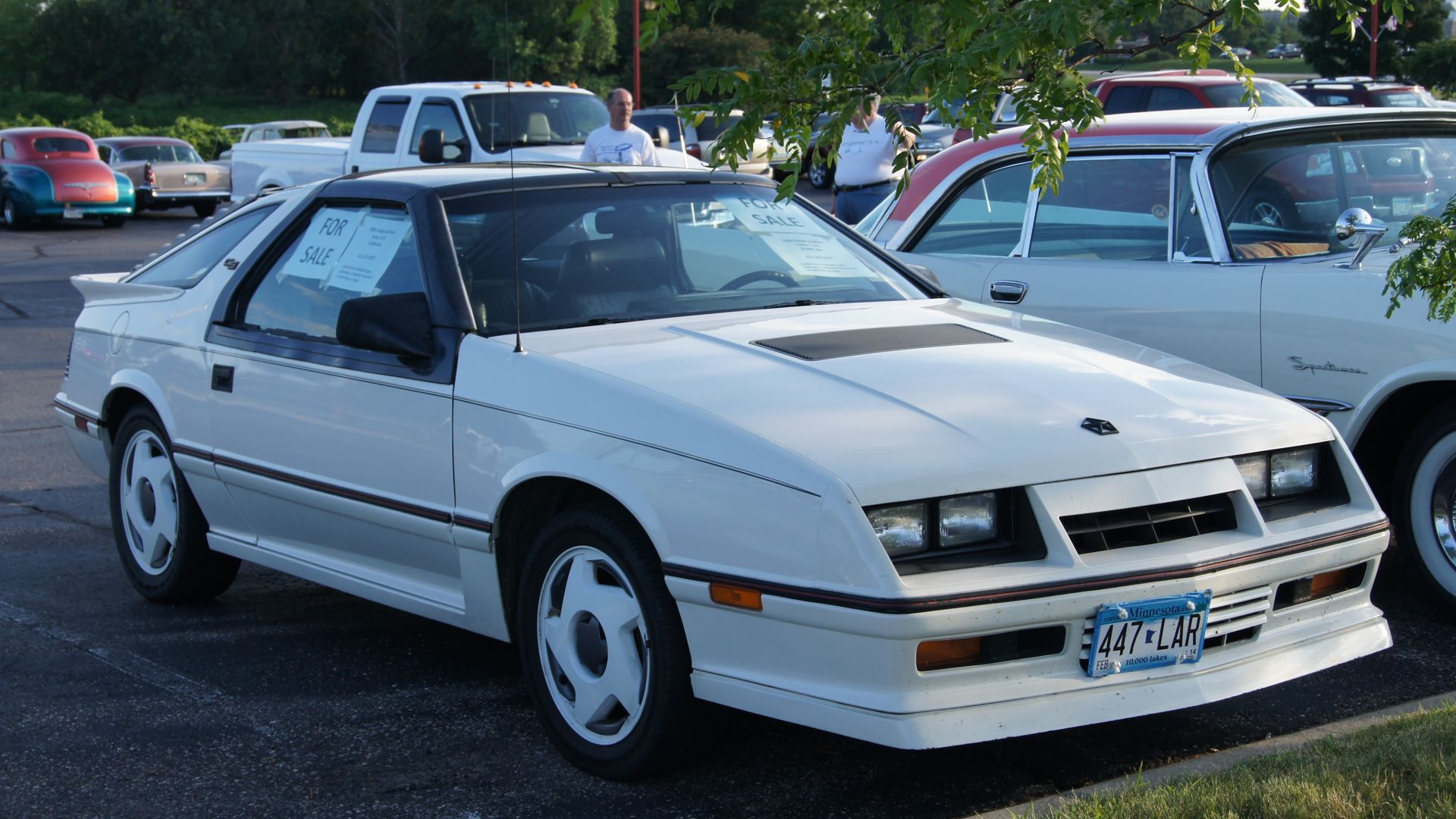 Greg Gjerdingen from Willmar, USA, Wikimedia Commons
Greg Gjerdingen from Willmar, USA, Wikimedia Commons
Pontiac Firebird Trans Am
By day, the Pontiac Firebird Trans Am prowled American streets as a quintessential 1980s muscle car, but its alter ego as KITT in Knight Rider revealed a more sophisticated soul. The blacked-out body and tech-laden dashboard turned this street machine into a cultural touchstone.
Chevrolet Corvette C4
After years of traditional Corvette designs, the 1984 C4 marked a revolutionary leap into modern engineering, introducing sleek aerodynamics and advanced technology. The model's digital dashboard and removable Targa top exemplified this evolution that helped drive impressive sales of over 350,000 units.
Mazda RX-7 FC
Those iconic pop-up headlights were just the beginning of the RX-7 FC's visual swagger. Mazda's sleek 1985 masterpiece was the pinnacle of Japanese sports car design, and its rotary engine, rear-wheel drive, and lightweight, balanced handling delivered the performance to match its stunning looks.
Toyota MR2 W10
Back when high-performance sports cars meant sky-high prices, Toyota flipped the script with its 1984 MR2 W10. As their first mid-engine production car, it brought exotic-level handling to everyday drivers, winning passionate fans with its nimble performance and surprisingly accessible price tag.
Nissan 300ZX Z31
The digital dash in Nissan's 1983 300ZX Z31 wasn't just for show; it perfectly complemented the car's advanced electronics and turbocharged V6 power. All this innovative tech found its natural home in that sleek, aerodynamic body, creating an iconic fusion of eighties performance cars.
Mitsubishi Starion
If any car captured the audacious spirit of the 1980s, it was the Mitsubishi Starion—a turbocharged statement of excess that stormed onto the scene in 1982. With pop-up headlights, wide-body styling, and rear-wheel drive, it delivered performance that matched its bold appearance.
Toyota Celica Supra Mk2
In an era when European grand tourers ruled performance car dreams, the 1982 Celica Supra Mk2 emerged as Japan’s charismatic challenger. With pop-up headlights, a straight-six engine, and advanced suspension, it blended Japanese reliability with true sporting character.
Volkswagen Golf GTI Mk2
Back in 1983, Volkswagen launched another GTI that helped craft automotive culture. The Mk2 Golf GTI's punchy performance upgrades and signature plaid seats turned this souped-up hatchback into Europe's darling, proving that practical cars could pack serious attitude.
 Riley from Christchurch, New Zealand, Wikimedia Commons
Riley from Christchurch, New Zealand, Wikimedia Commons
Peugeot 205 GTI
Now revered as a defining performance car of its era, the Peugeot 205 GTI burst onto the scene in 1984 and promptly set new standards for hot hatches. Its combination of agile, sharp handling, and playful character created an enduring benchmark that driving enthusiasts still celebrate.
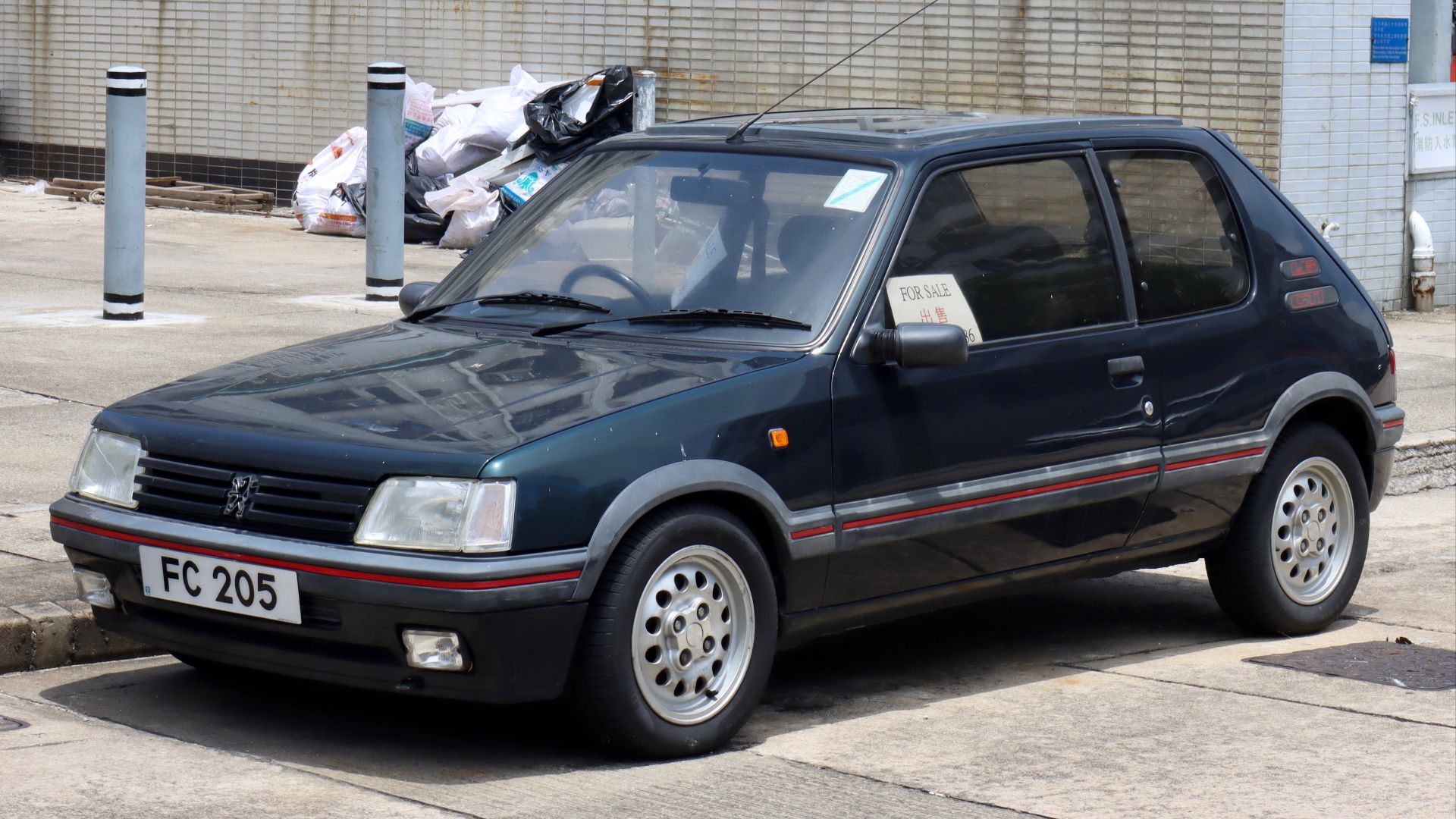 Jones028 from Hong Kong, Wikimedia Commons
Jones028 from Hong Kong, Wikimedia Commons
Honda Civic Si
In 1986, compact cars were trapped in economy-car purgatory until Honda flipped the script with its Civic Si. Armed with fuel injection and sport-tuned suspension, this hatchback proved that practical transportation could deliver genuine thrills, quickly earning a passionate enthusiast following.
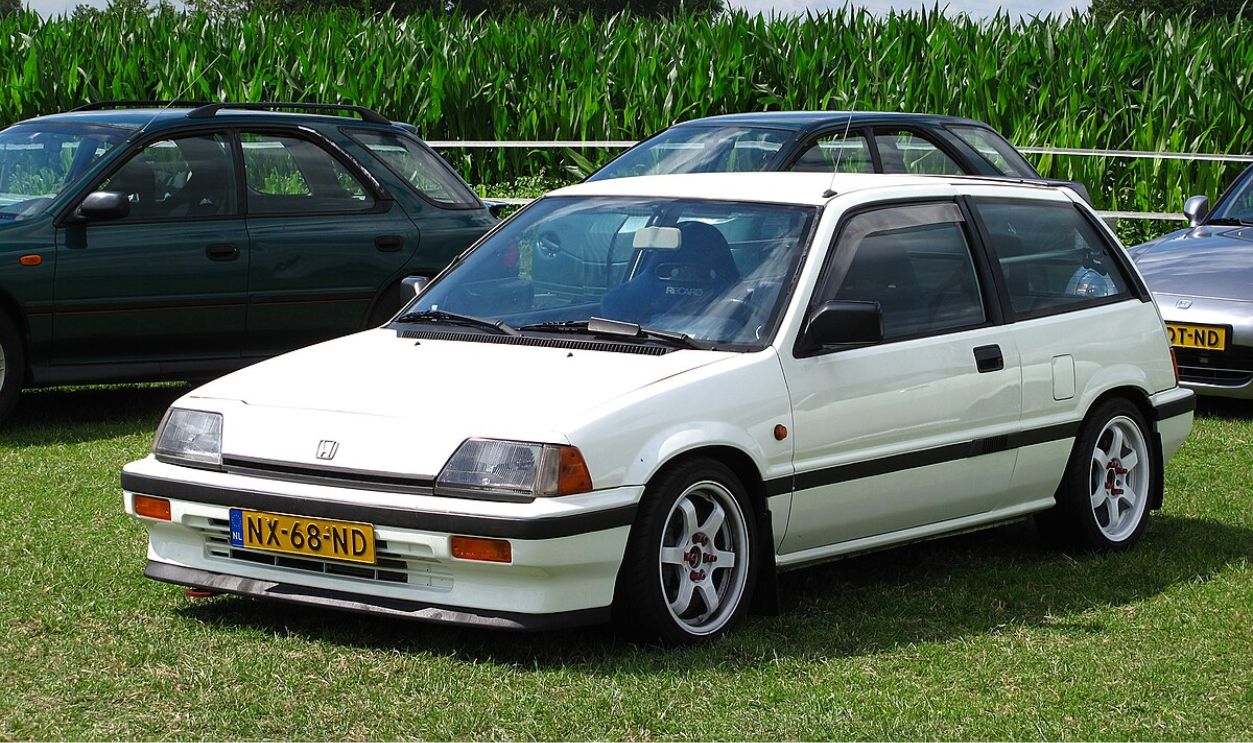 Brian Snelson from Hockley, Essex, England, Wikimedia Commons
Brian Snelson from Hockley, Essex, England, Wikimedia Commons
Ford Escort XR3i
Those eye-catching alloy wheels and bold rear spoiler made the 1983 Ford Escort XR3i instantly pop on European streets, while its sporty three-door profile and aggressive body kit turned this fuel-injected hot hatch into a must-have symbol of youthful energy and driving enthusiasm.
 Kieran White from Manchester, England, Wikimedia Commons
Kieran White from Manchester, England, Wikimedia Commons
Renault 5 Turbo
Rally racing's brutal demands called for radical solutions, which Renault answered in 1980 with its turbocharged 5 Turbo. The engineering team's distinctive wide-body design and rear-wheel-drive configuration proved transformative, propelling this hot hatch to legendary status in the Group B rally scene.
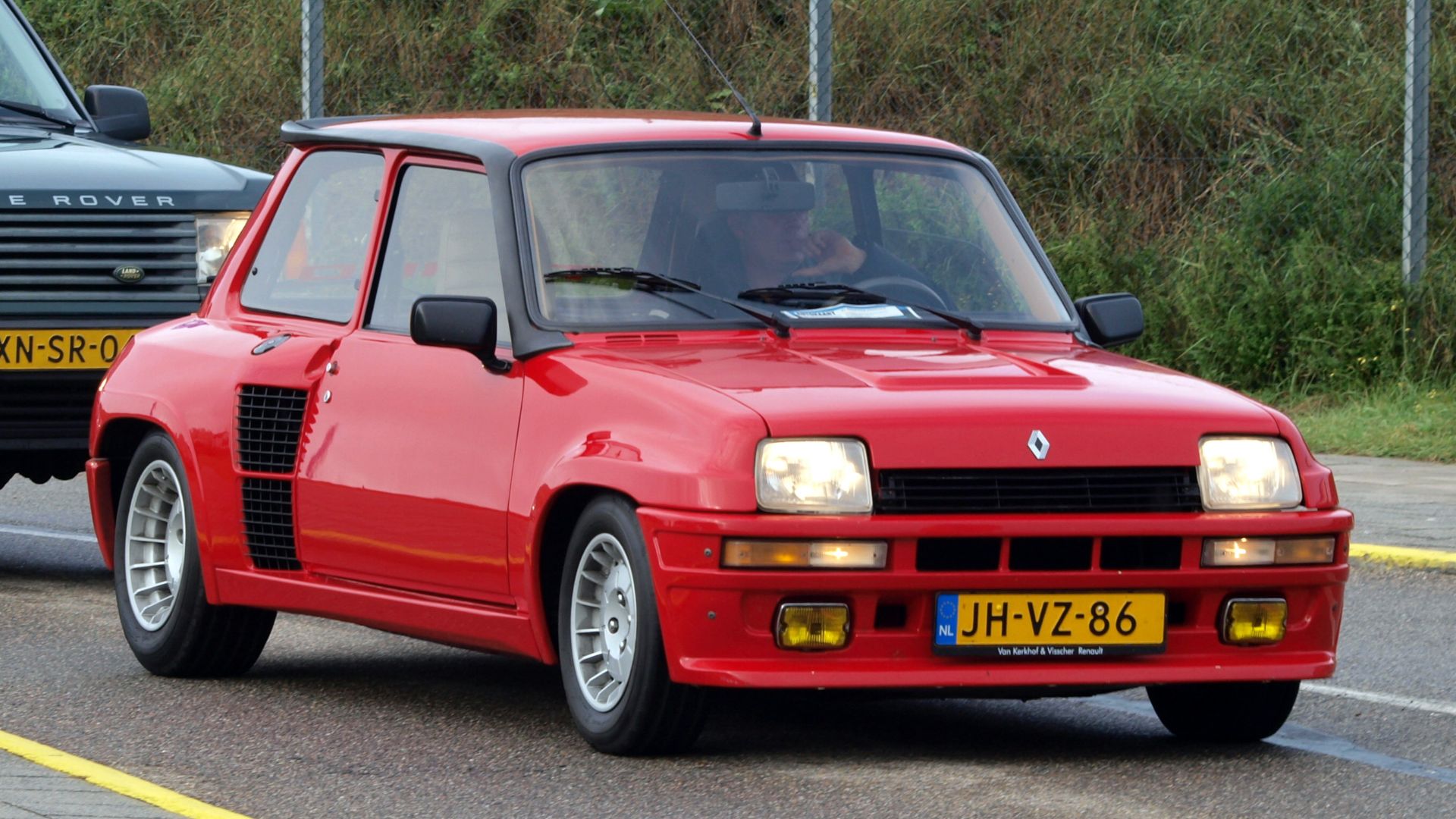 Alf van Beem, Wikimedia Commons
Alf van Beem, Wikimedia Commons
BMW 7 Series E32
Breaking new ground with Germany's first post-war V12 engine, the 1986 BMW 7 Series E32 redefined luxury motoring. This flagship sedan pioneered Xenon headlights in 1991, and long-wheelbase variants pampered executives with built-in refrigerators and car phones.
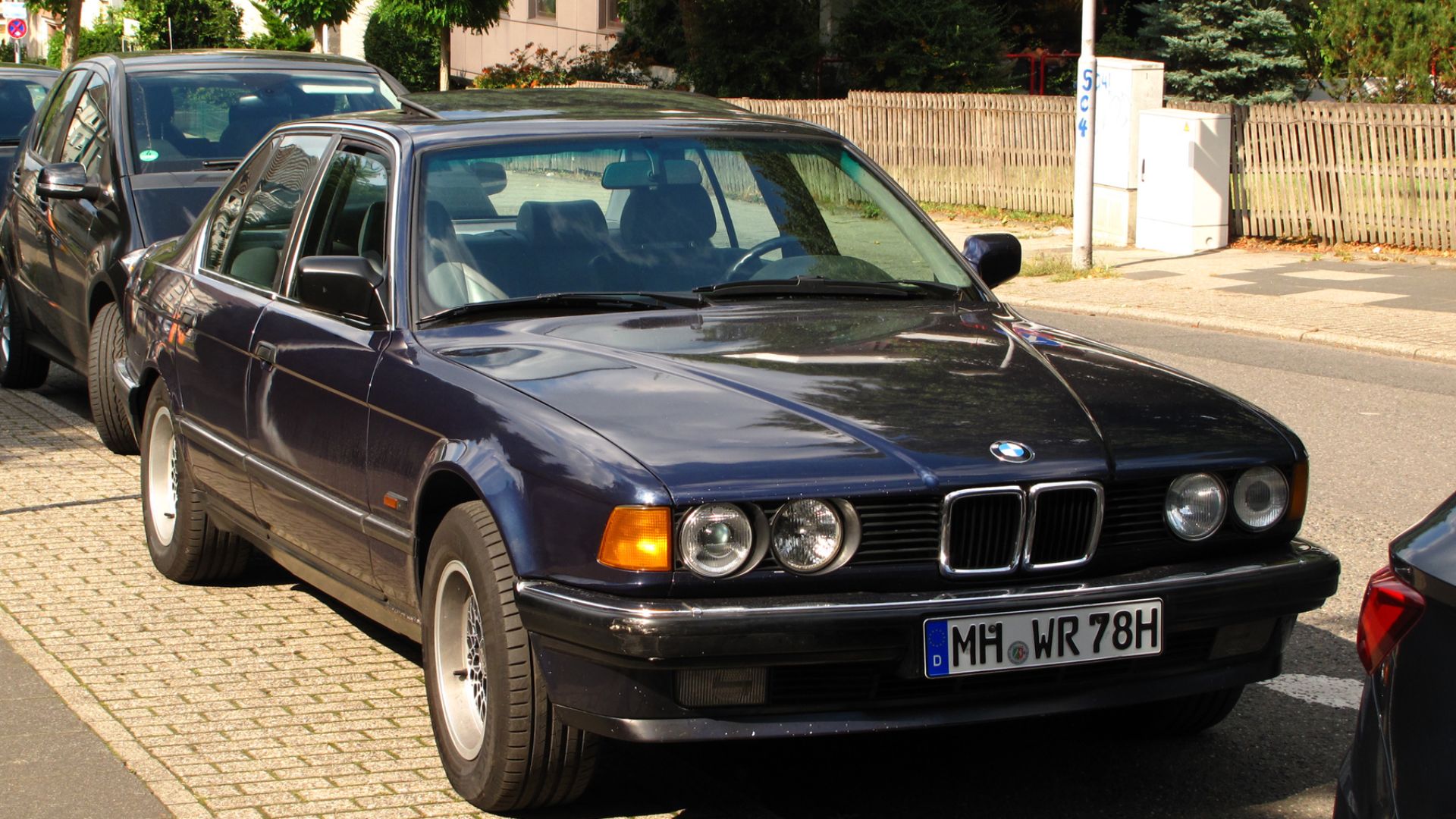 Rutger van der Maar, Wikimedia Commons
Rutger van der Maar, Wikimedia Commons
Mercedes-Benz 560 Sec
Powered by a commanding 5.5-liter V8, the Mercedes-Benz 560 SEC debuted in 1985 as the most powerful S-Class coupe. With its pillarless profile and refined engineering, this flagship hardtop became a coveted status symbol, favored by executives, athletes, and celebrities alike.
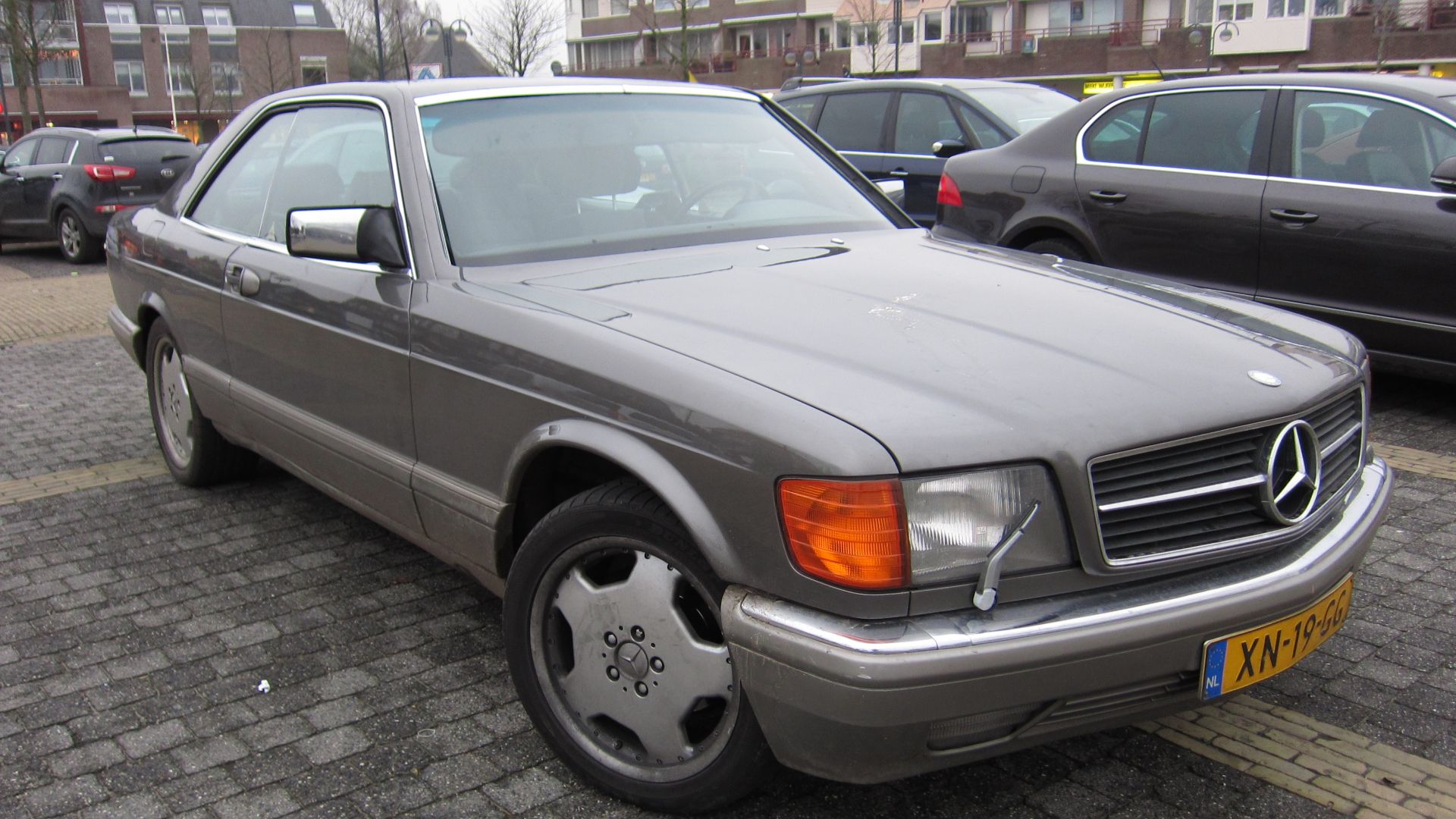 Rutger van der Maar, Wikimedia Commons
Rutger van der Maar, Wikimedia Commons
Audi Quattro
Before 1980, rally racing stuck to old-school rules—until Audi unleashed the Quattro. As the first production car with permanent all-wheel drive, it dominated the 1980s championships. Its boxy fender flares also ignited a bold new Audi design language that still echoes today.
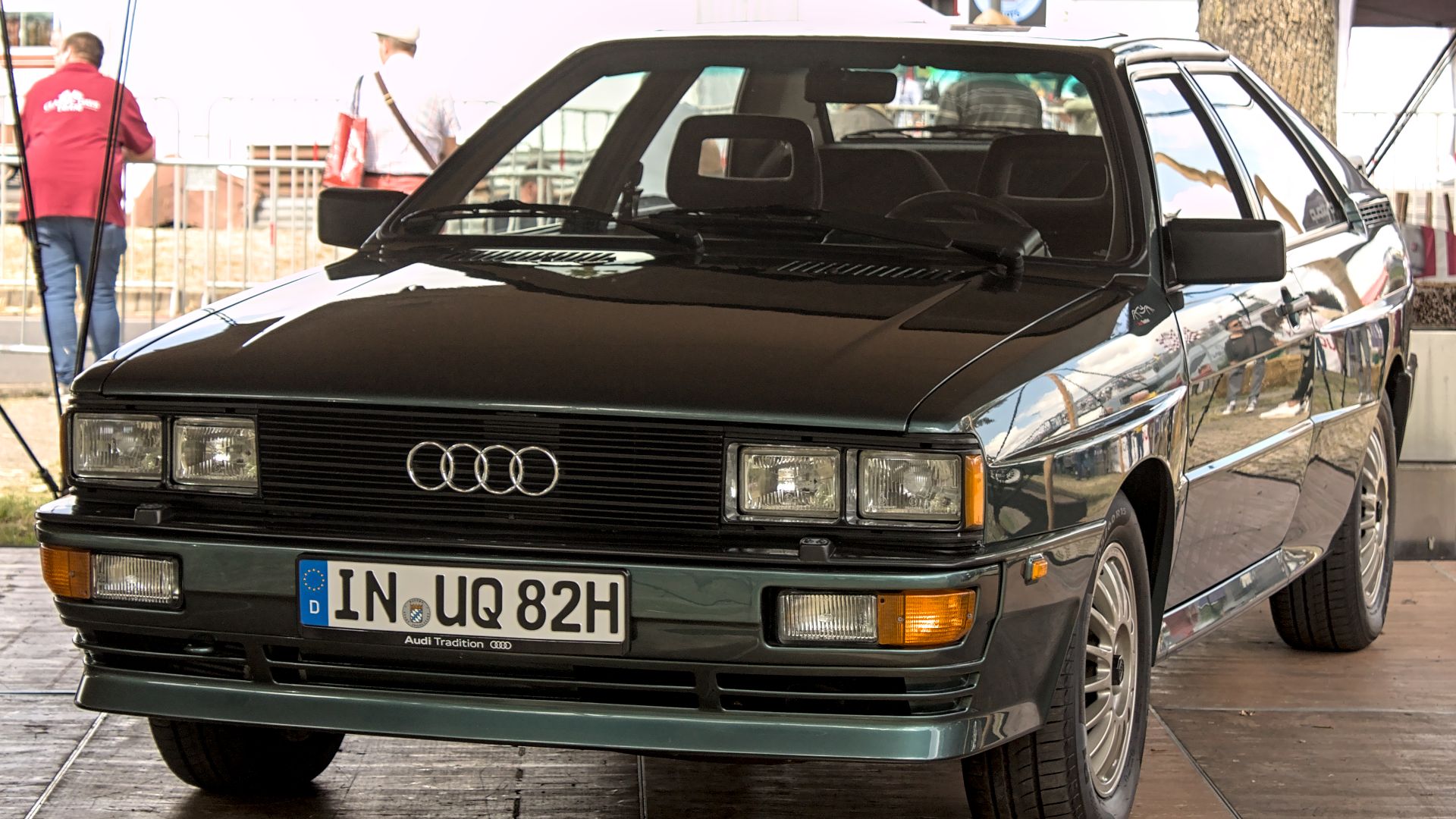 Alexander Migl, Wikimedia Commons
Alexander Migl, Wikimedia Commons
Jaguar XJS
Sweeping lines and dramatic flying buttresses carved an unforgettable silhouette for the 1980s Jaguar XJS, its exterior drama matched by sumptuous grand touring luxury within. Under the sleek hood lurked automotive royalty, one of the era's rare V12 engines.
Rolls-Royce Silver Spirit
Crowned by the timeless Spirit of Ecstasy hood ornament, the Rolls-Royce Silver Spirit made its 1980 debut as a flagship sedan that married elegance with modernity. Its lower, wider stance led to an interior sanctuary of Wilton carpets and Connolly leather upholstery.
Toyota Supra A70
The A70 marked Toyota's bold declaration of Supra independence in 1986, stepping out of the Celica's shadow. Under the hood, a turbocharged inline-six engine delivered the muscle, and electronic suspension tuning showcased the brains. Those signature pop-up headlights? Pure automotive personality.
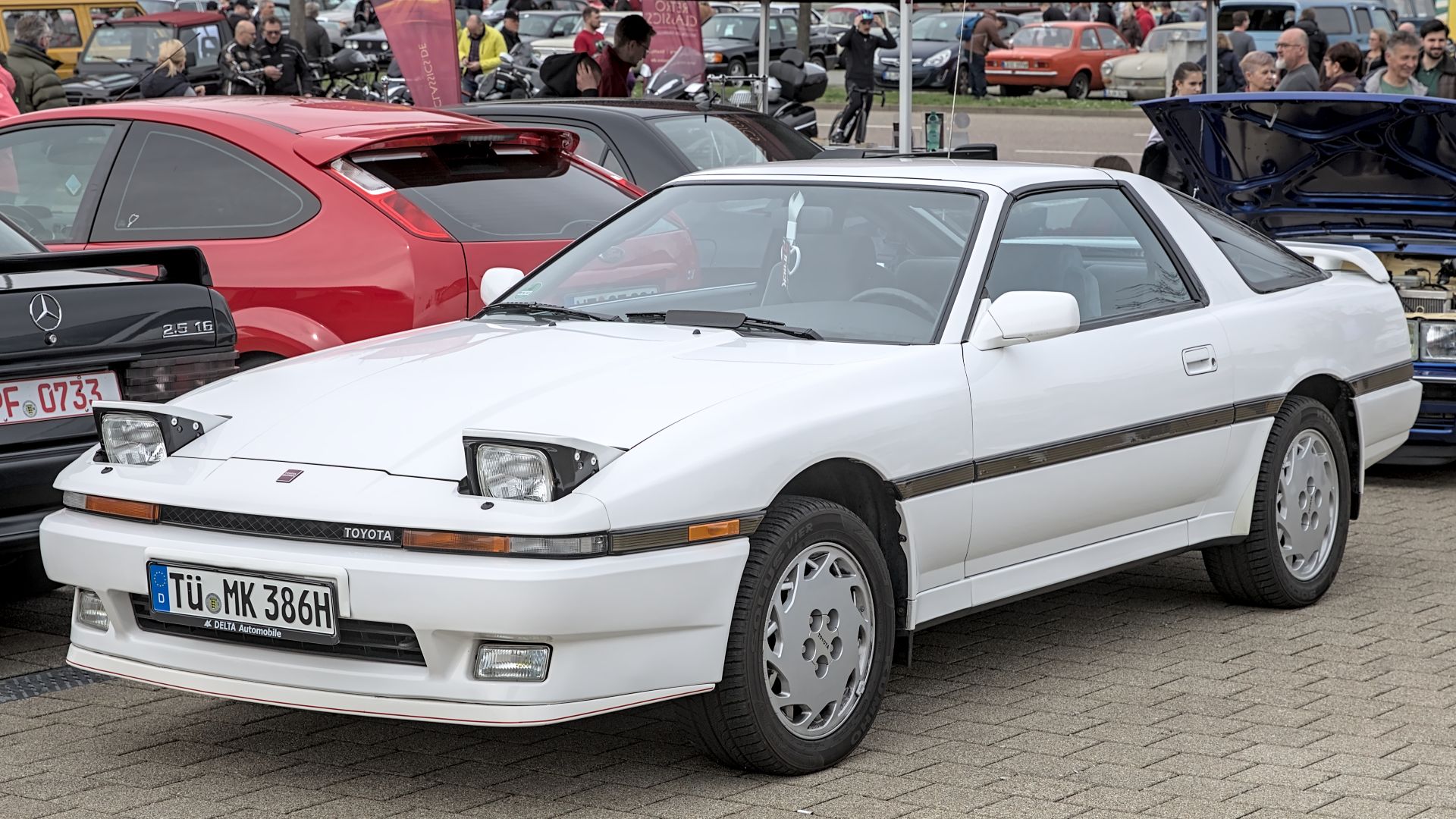 Alexander-93, Wikimedia Commons
Alexander-93, Wikimedia Commons
Nissan 280ZR Turbo
Feel the wind rush through those removable T-top panels as you command Nissan's first turbocharged Z-car masterpiece. From 1981 to 1983, the 280ZX Turbo merged open-air freedom with boosted performance to create a landmark Japanese sports car that defined early-eighties excitement.
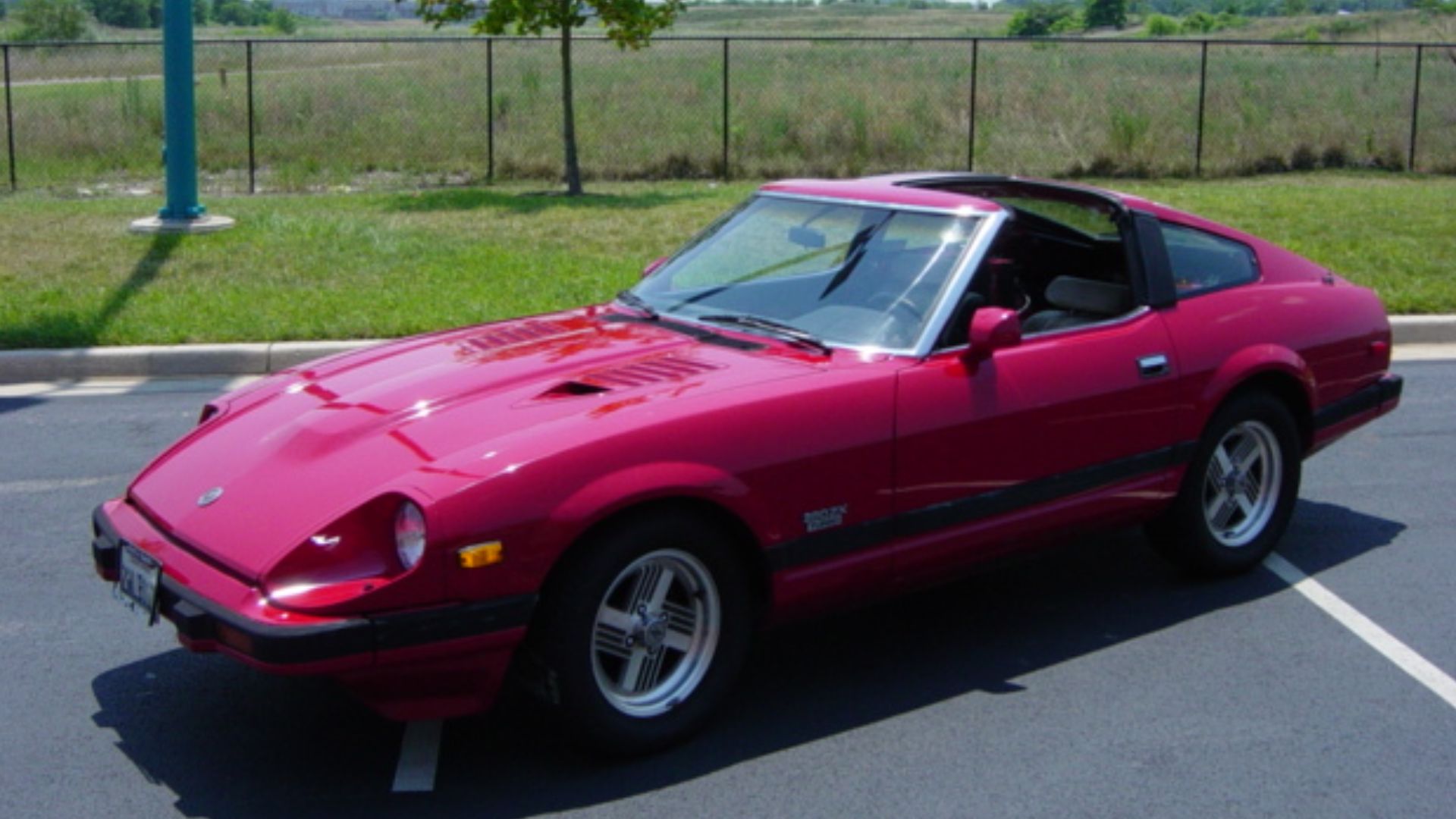 Avriette at English Wikipedia, Wikimedia Commons
Avriette at English Wikipedia, Wikimedia Commons
Honda Prelude (1983)
Honda's revolutionary double-wishbone suspension system anchored the 1983 Prelude's engineering transformation, complemented by sleeker aerodynamics and a driver-centric cockpit layout. These integrated technical advances created a sports coupe that delivered both handling precision and engaging performance for enthusiast drivers.
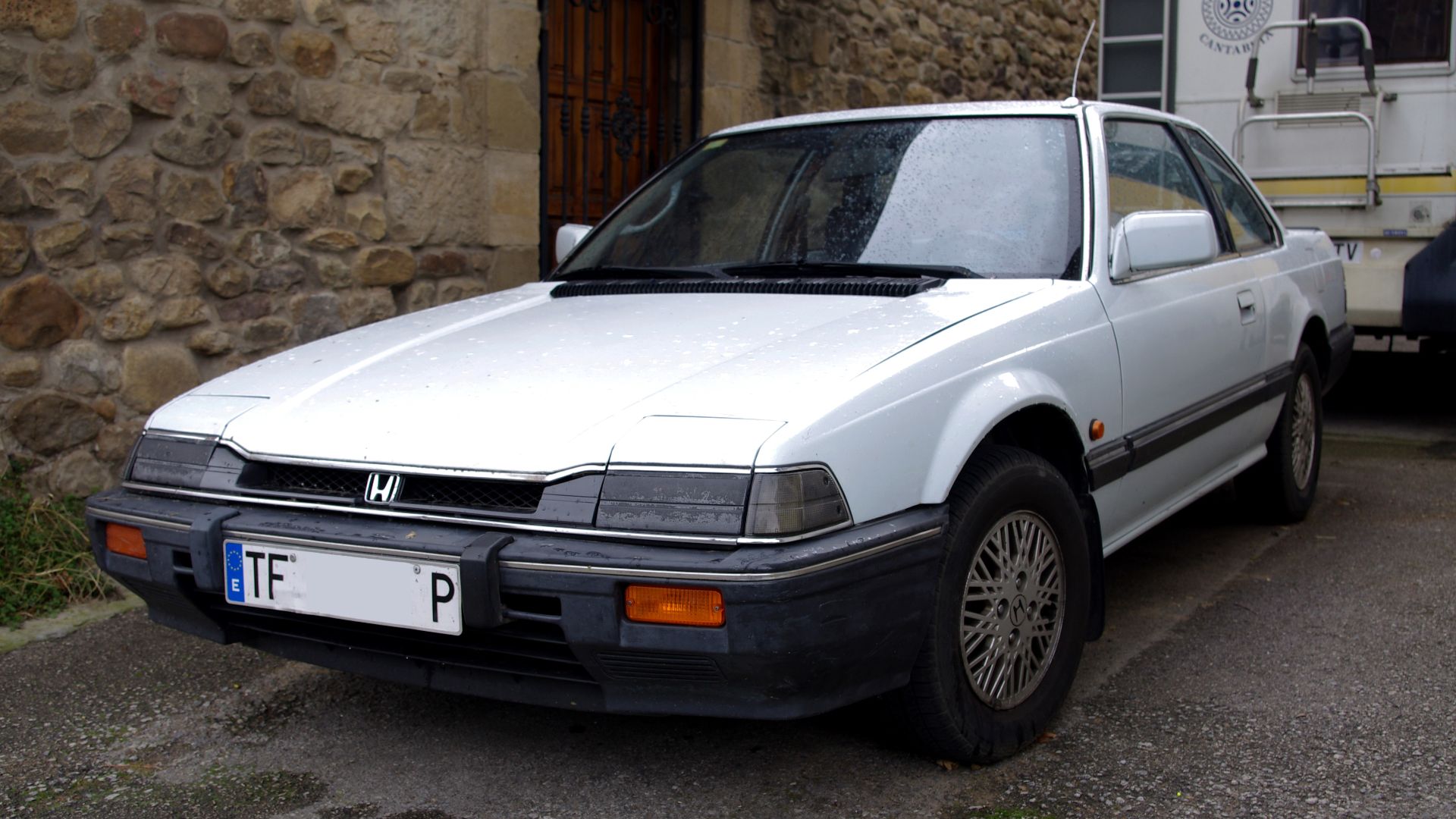 Spanish Coches, Wikimedia Commons
Spanish Coches, Wikimedia Commons
Mazda 323 GTX
With its flared arches and boxy silhouette, the 1985 Mazda 323 GTX signaled rally intent from every angle. Turbocharged power and all-wheel drive backed the look to create a homologation-ready hot hatch that blended everyday practicality with serious competition-bred performance.
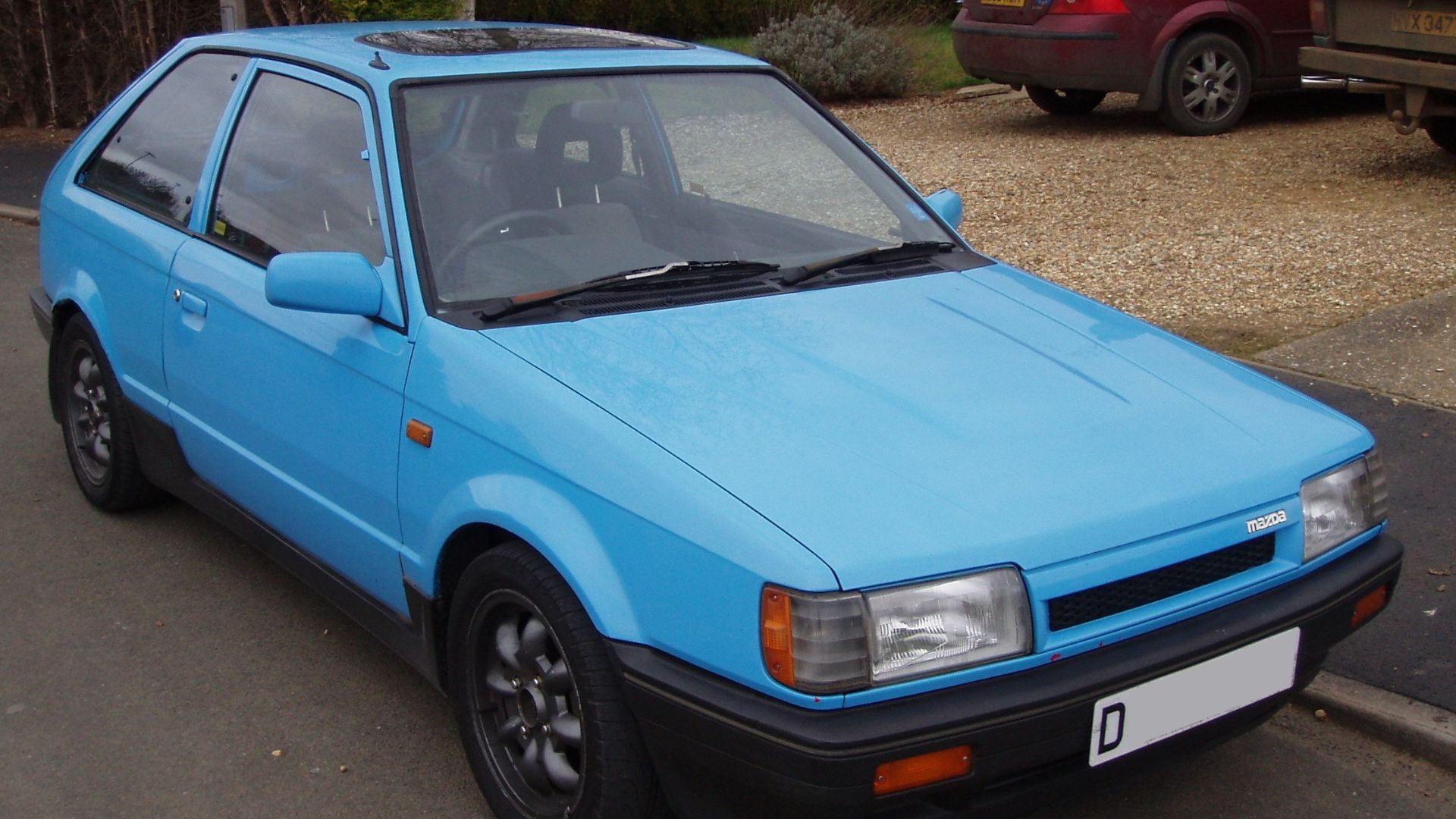 No machine-readable author provided. Collard assumed (based on copyright claims)., Wikimedia Commons
No machine-readable author provided. Collard assumed (based on copyright claims)., Wikimedia Commons
Mitsubishi Galant VR-4
In 1987, Group A rallying's strict homologation rules posed a formidable challenge for manufacturers. Mitsubishi responded decisively with the Galant VR-4, a sophisticated fusion of turbocharged power and all-wheel-drive technology. This innovative solution became the engineering cornerstone for Mitsubishi.
 Jones028 from Hong Kong, Wikimedia Commons
Jones028 from Hong Kong, Wikimedia Commons
Jeep Cherokee XJ
Ask any off-road crew about their dream builds, and the Cherokee XJ inevitably comes up. Launched in 1984, this SUV abandoned the traditional truck vibe for a revolutionary unibody design, offering genuine trail capability with urban-friendly comfort that effectively paved the way for the modern crossover movement.
Land Rover Range Rover (1980s Models)
Beneath its muscular V8 engine and permanent four-wheel-drive system beat the heart of an artistic masterpiece. The 1980s Range Rover transcended mere utility and became the first vehicle honored with display at the Louvre, its split tailgate completing a design that merged luxury with rugged capability.
Toyota Land Cruiser FJ60
You might expect the 1980 Land Cruiser FJ60 to be just another rugged off-roader with its tough-as-nails ladder frame, but Toyota had other plans. This boxy beauty pioneered family-friendly comfort, complete with factory air conditioning, while retaining its legendary trail-conquering DNA.
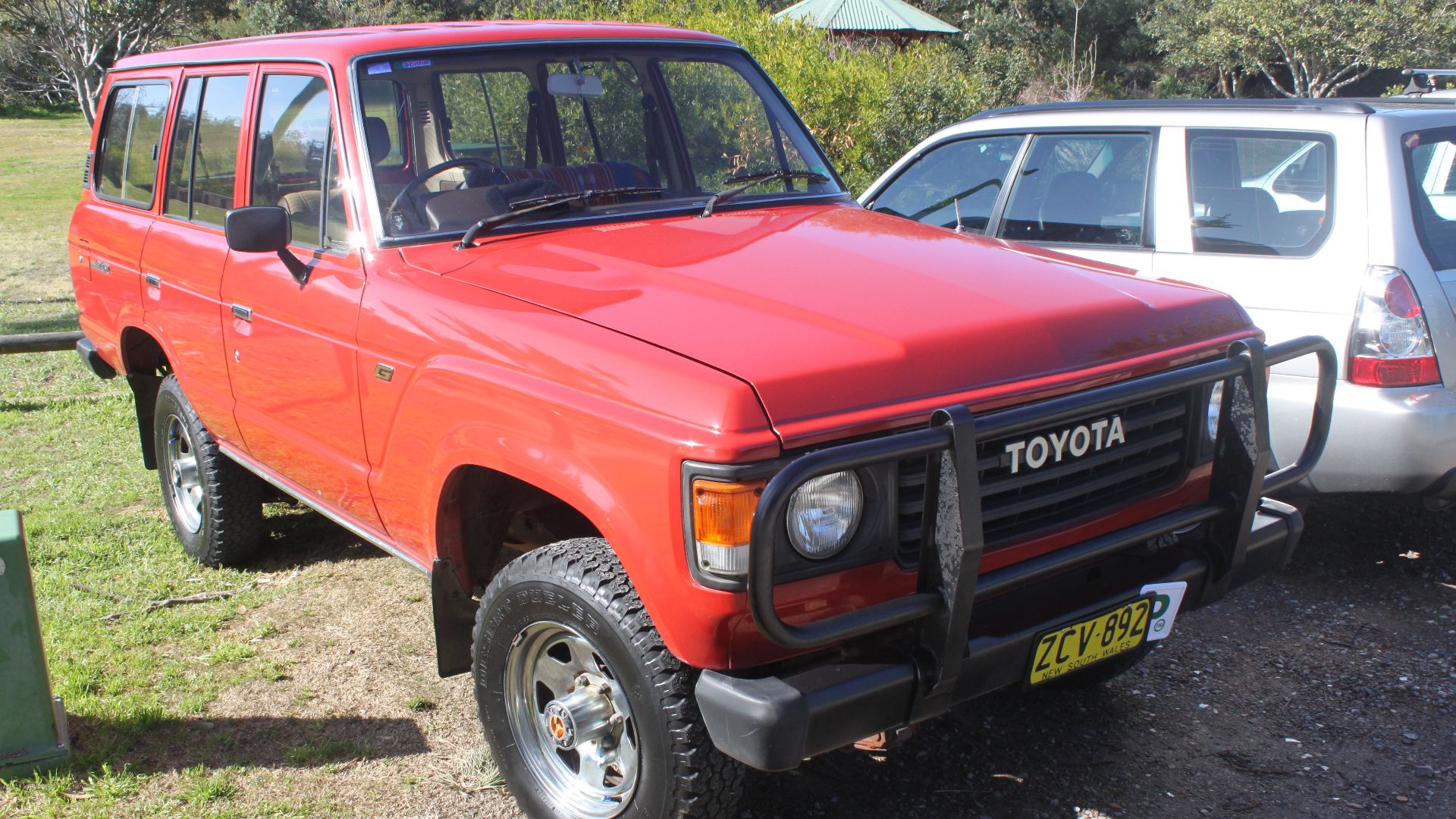 Jeremy from Sydney, Australia, Wikimedia Commons
Jeremy from Sydney, Australia, Wikimedia Commons
Suzuki Samurai
Known internationally as the Jimny, the vehicle that Americans would embrace as the Samurai arrived in 1985, offering a refreshing take on 4x4 capability. As a nimble warrior ride, its compact frame mastered narrow trails while its affordable price tag democratized off-road adventure.
Chevrolet Blazer K5 (1980s Models)
Throughout the 1980s, the Chevrolet K5 Blazer embodied America’s automotive spirit, evolving from the military M1009 CUCV into a cultural icon. Its removable fiberglass top invited open-air adventures, while a thriving modification culture turned these full-size SUVs into personalized expressions of freedom.
Volkswagen Cabriolet (1980s Models)
While Volkswagen marketed its Golf-based Cabriolet as a safe German drop-top with a roll bar and manual soft top, 1980s America embraced it in a different way. Formerly the Rabbit Convertible, it became the definitive “chick car,” blending approachable style with carefree, youthful charm.
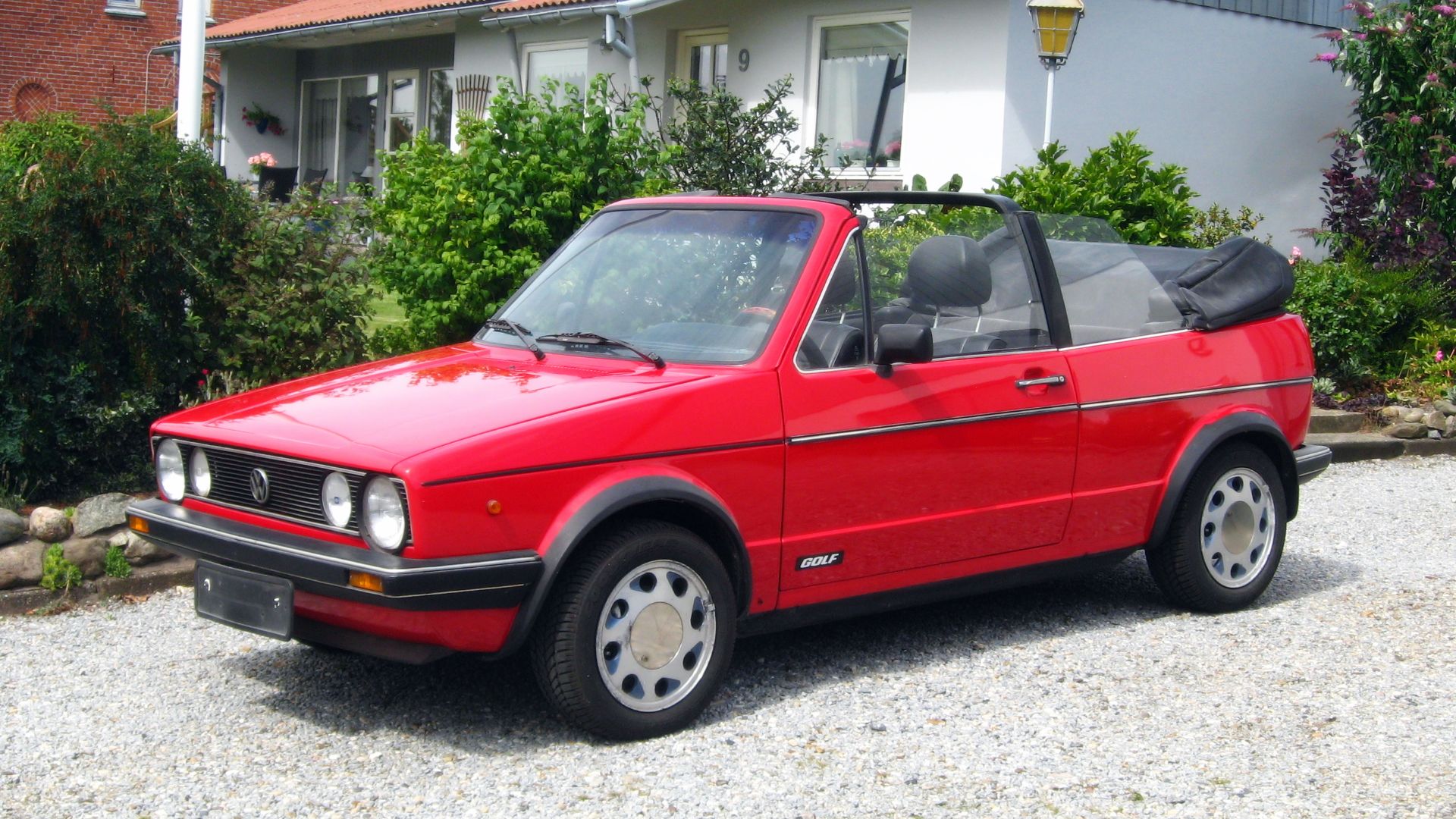 photo © 2009 by Tomasz Sienicki [user: tsca, mail: tomasz.sienicki at gmail.com], Wikimedia Commons
photo © 2009 by Tomasz Sienicki [user: tsca, mail: tomasz.sienicki at gmail.com], Wikimedia Commons
Chrysler LeBaron Convertible (1982)
Built on Chrysler’s K-car platform, the 1982 LeBaron Convertible paired front-wheel-drive innovation with open-air freedom. Reviving a market dormant since the 1976 Cadillac Eldorado, it even drew high-profile fans like Lee Iacocca and Frank Sinatra.
Ford Bronco (1980s Models)
The full-size Bronco's potent V8 engine gave adventurers the muscle to tackle any terrain, while its clever removable rear roof let the outdoors pour in. This rugged combination made Ford's 1980s SUV more than just transportation; it became a symbol of freedom on four wheels.
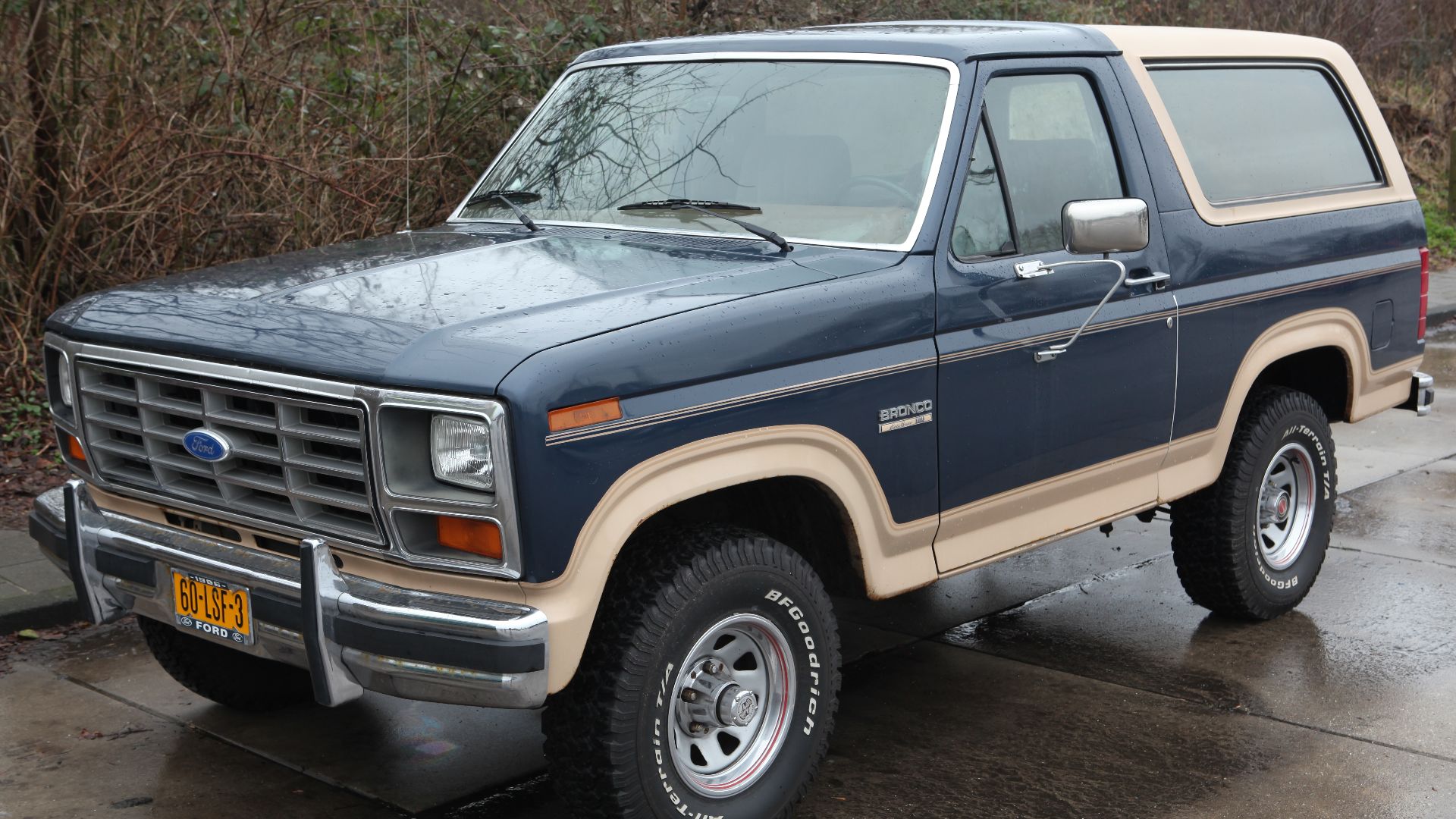 Joost J. Bakker from IJmuiden, Wikimedia Commons
Joost J. Bakker from IJmuiden, Wikimedia Commons
Dodge Omni GLH-S
Carroll Shelby's engineering vision made the ordinary Omni a turbocharged masterpiece with the 1986 GLH-S. His technical prowess gave birth to a hatchback worthy of its "Goes Like Hell" designation, with production limited to just 500 units to ensure each met his exacting standards.
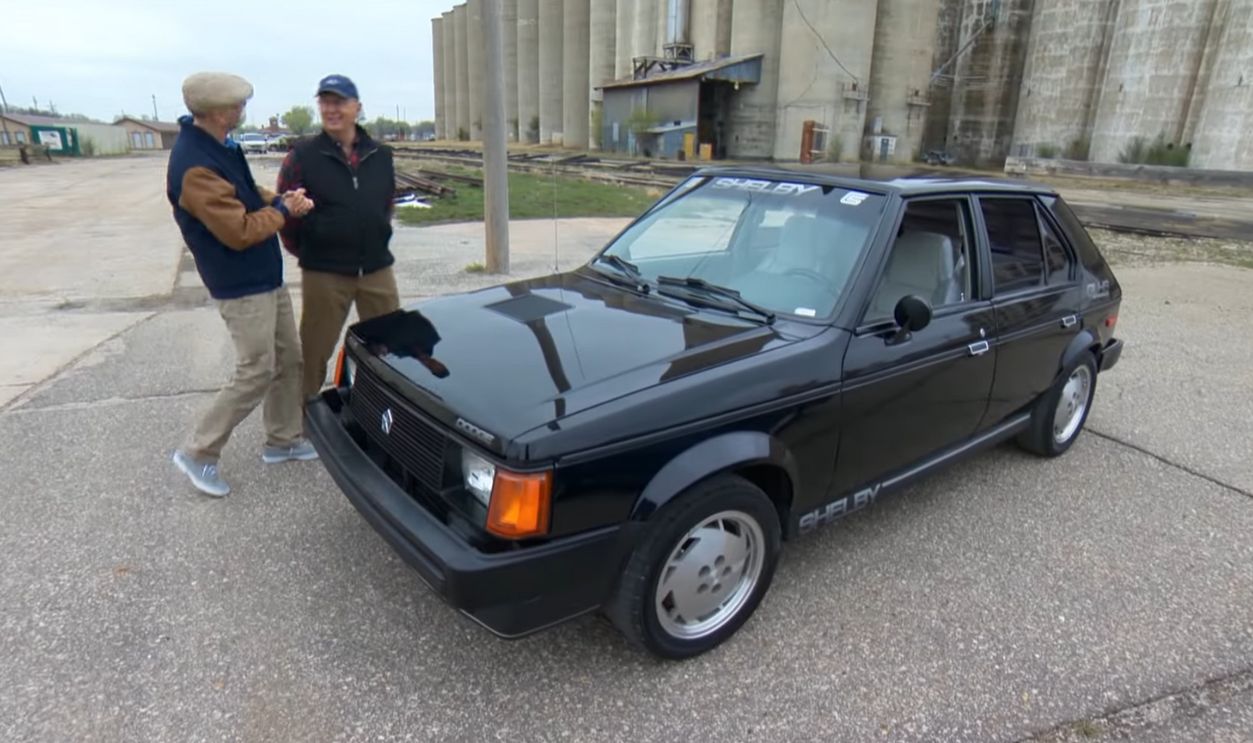 Shelby Dodge Omni GLHS | Saleen Mustang | Rare 80's Performance by MyClassicCarTV
Shelby Dodge Omni GLHS | Saleen Mustang | Rare 80's Performance by MyClassicCarTV
BMW M3 E30
Where the standard 3 Series played it safe, the 1986 BMW M3 E30 went full flex with its boxy fender flares and statement-making rear wing. This wasn't just for show; the competition-ready vibe and high-revving four-cylinder made it the ultimate success in touring car racing.
Ferrari F40
Nothing captured the bold, take-no-prisoners spirit of the 1980s quite like the Ferrari F40. Succeeding the 288 GTO with radical aerodynamics and lightweight construction, this aggressive supercar became the ultimate symbol of excess— and fittingly, Enzo Ferrari's final approved masterpiece before his passing.
Porsche 959
The 959's revolutionary all-wheel-drive system unlocked Porsche's next leap forward in 1986, multiplying the potential of its twin-turbocharged flat-six engine. This technological cascade transformed a Group B rally concept into the era's most advanced supercar, even setting new benchmarks for high-performance innovation.
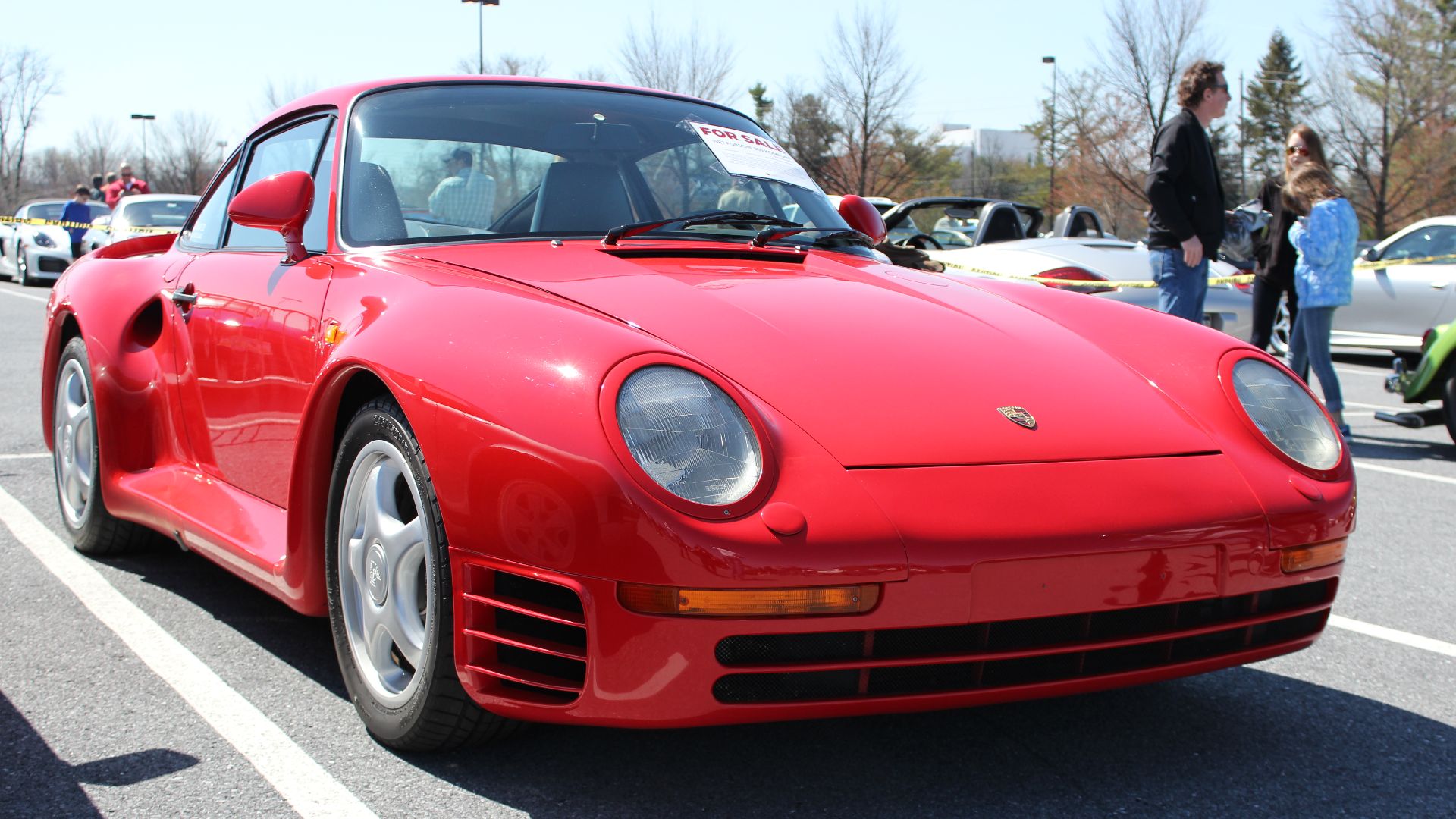 ilikewaffles11, Wikimedia Commons
ilikewaffles11, Wikimedia Commons
Ferrari Testarossa
When Miami Vice put the Ferrari Testarossa in America's living rooms, it turned this Italian masterpiece into a cultural phenomenon. Introduced in 1984, the car's bold side strakes and wide rear stance made it TV-ready, while its "red head" name nodded to those signature crimson engine covers.
Porsche 911 Turbo (930)
Dubbed the "Widowmaker" for its notoriously treacherous handling, the 1980s Porsche 911 Turbo (930) personified both menace and desire. Its turbocharged flat-six engine and muscular wide-body design, crowned by that iconic whale-tail spoiler, always turned a few heads and made a statement.

